An Explorer’s Guide To Rogers Park, Chicago’s Eccentric Far North Side
An Explorer’s Guide To Rogers Park, Chicago’s Eccentric Far North Side
Published October 15, 2022
One of Chicago’s most overlooked and underrated neighborhoods is Rogers Park! It’s as far north as you can go while remaining within city limits. As such, this isn’t a place where you’ll run into lots of tourists. However, Rogers Park has a lot to offer, including its own distinct, off-beat vibe.
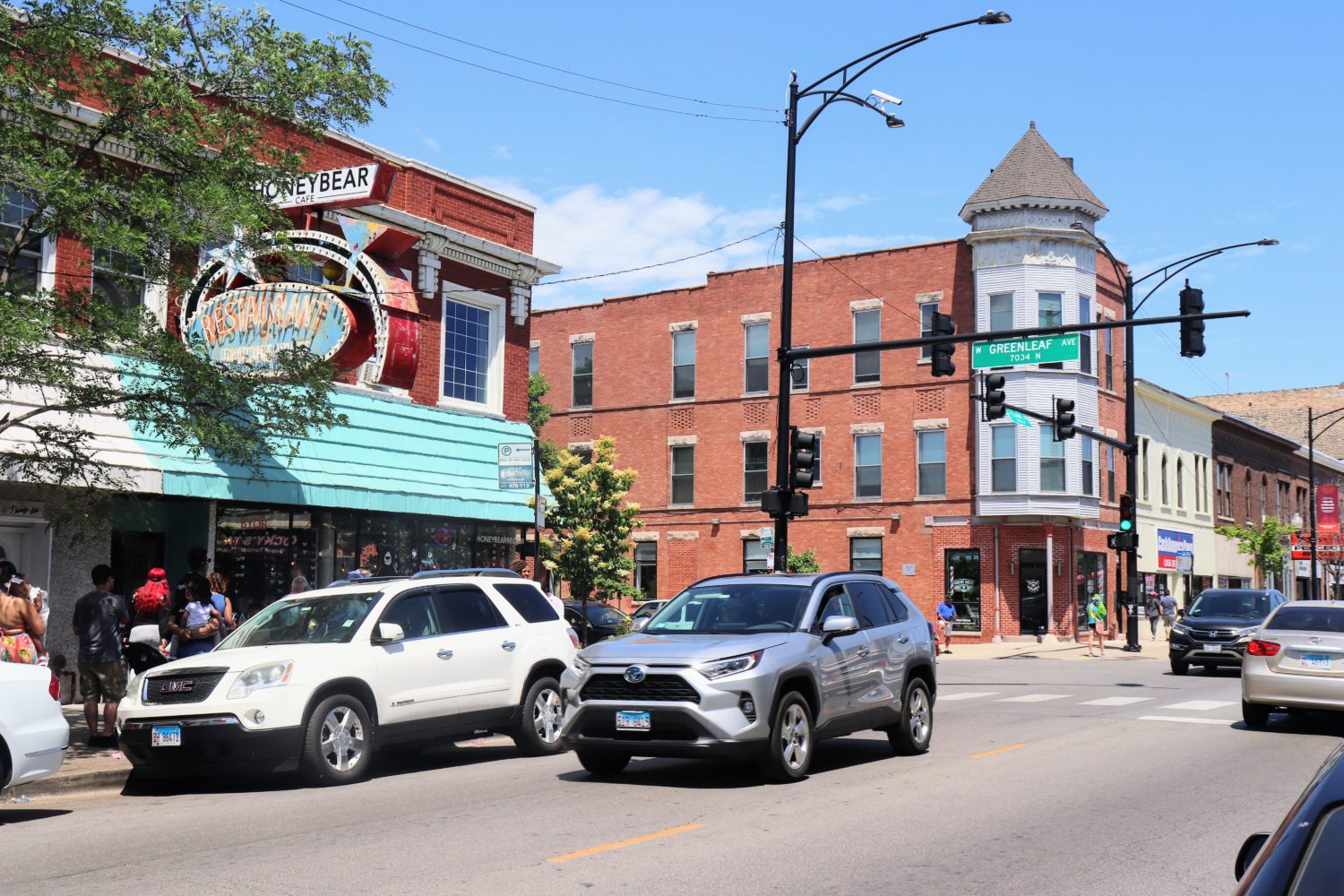
Located along the shores of Lake Michigan, Rogers Park offers a stunning stretch of coastline that is never overrun by beachgoers. It’s also home to one of Chicago’s prettiest university campuses. What’s more, Rogers Park has a prolific international culinary scene that hasn’t yet fully been discovered! This blog post includes everything you know to start exploring this unique community. To skip down to any of the sections below, click or tap the corresponding link.
Layout of Rogers Park
As one of Chicago’s 77 community areas, the borders of Rogers Park are explicitly defined by the city. It’s about 11 miles north of the Loop (downtown Chicago). Neighboring areas include Edgewater to the south and West Ridge to the west. Directly east of Rogers Park is Lake Michigan. If you travel north from here, you’ll enter the suburb of Evanston.
Getting to Rogers Park from the Loop is easy: you can either take the CTA Red or Purple Lines. There is also a Metra Union Pacific North (UP-N) station here, but I’ve only used Metra once or twice. Four different CTA stops serve Rogers Park: Loyola, Morse, Jarvis, and Howard. This means you’re never far from a train station!
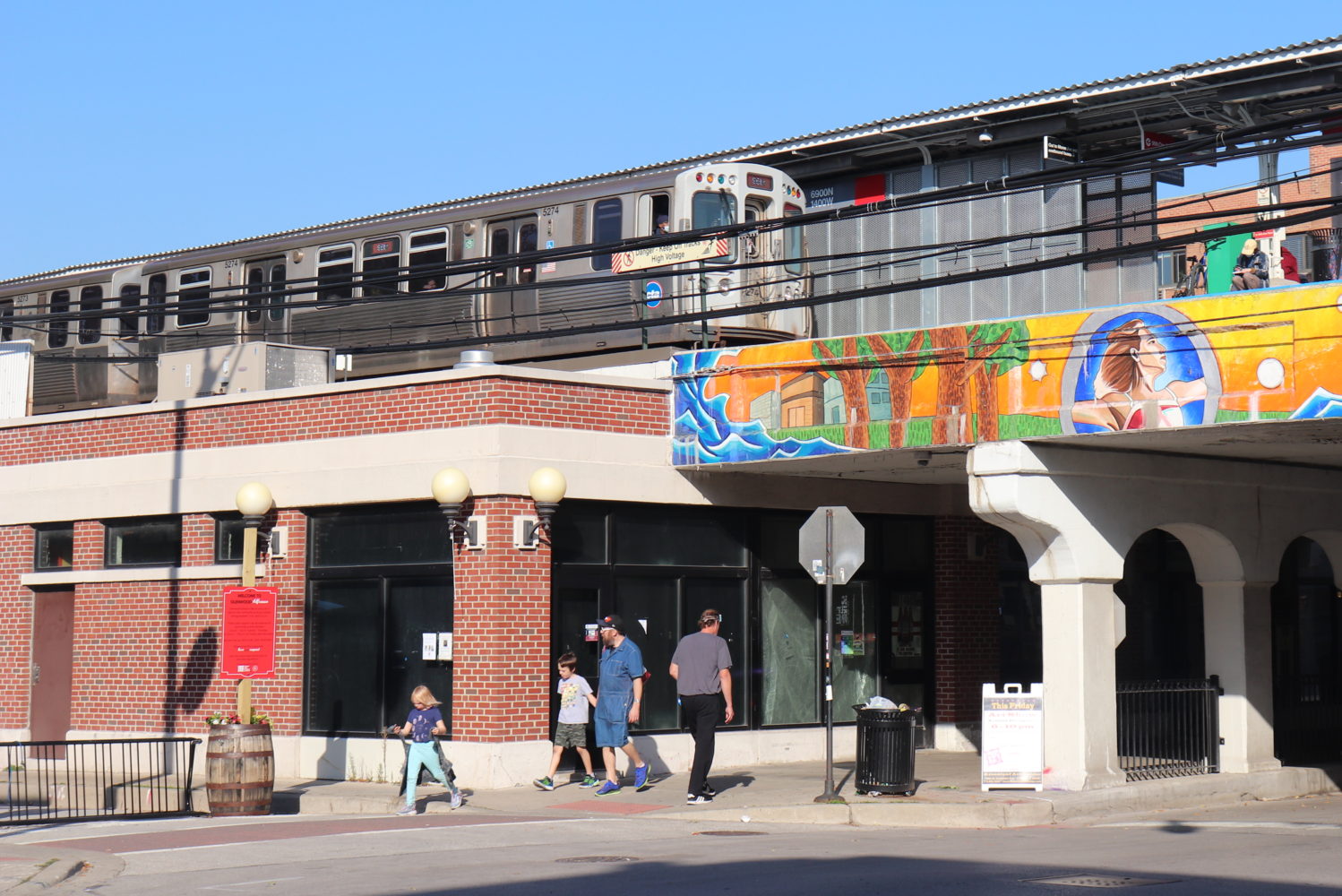
Rogers Park has three main north-to-south streets: Sheridan next to the lake; Clark, which runs down the middle of the neighborhood, and Ridge on its western side. Major east-to-west streets include Devon, Pratt, Touhy, and Howard.
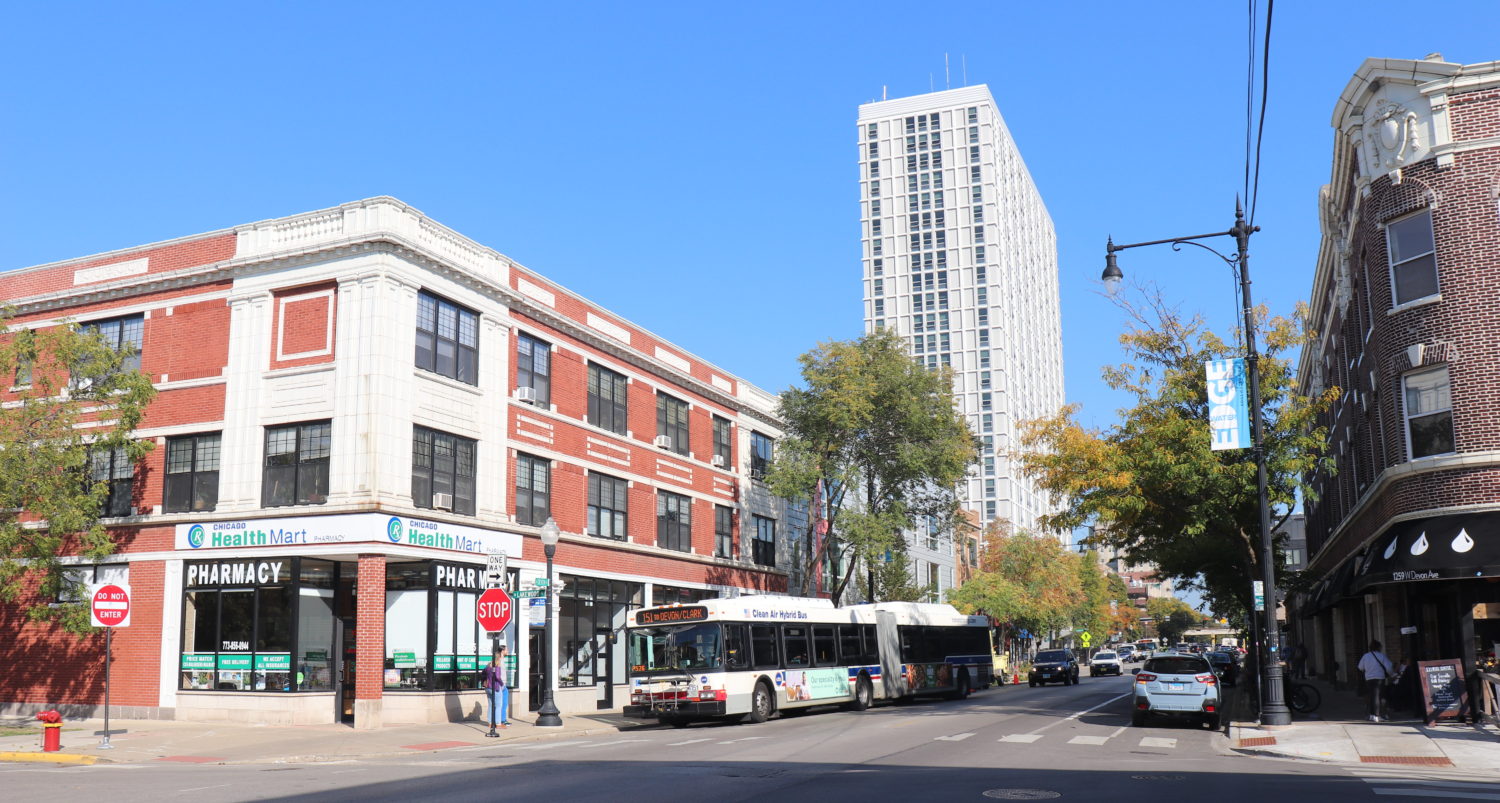
Loyola University Chicago
One of Chicago’s most beautiful universities is situated right on the southeast corner of Rogers Park. Loyola is a Jesuit Catholic private university, but its lakefront campus is open to the public.
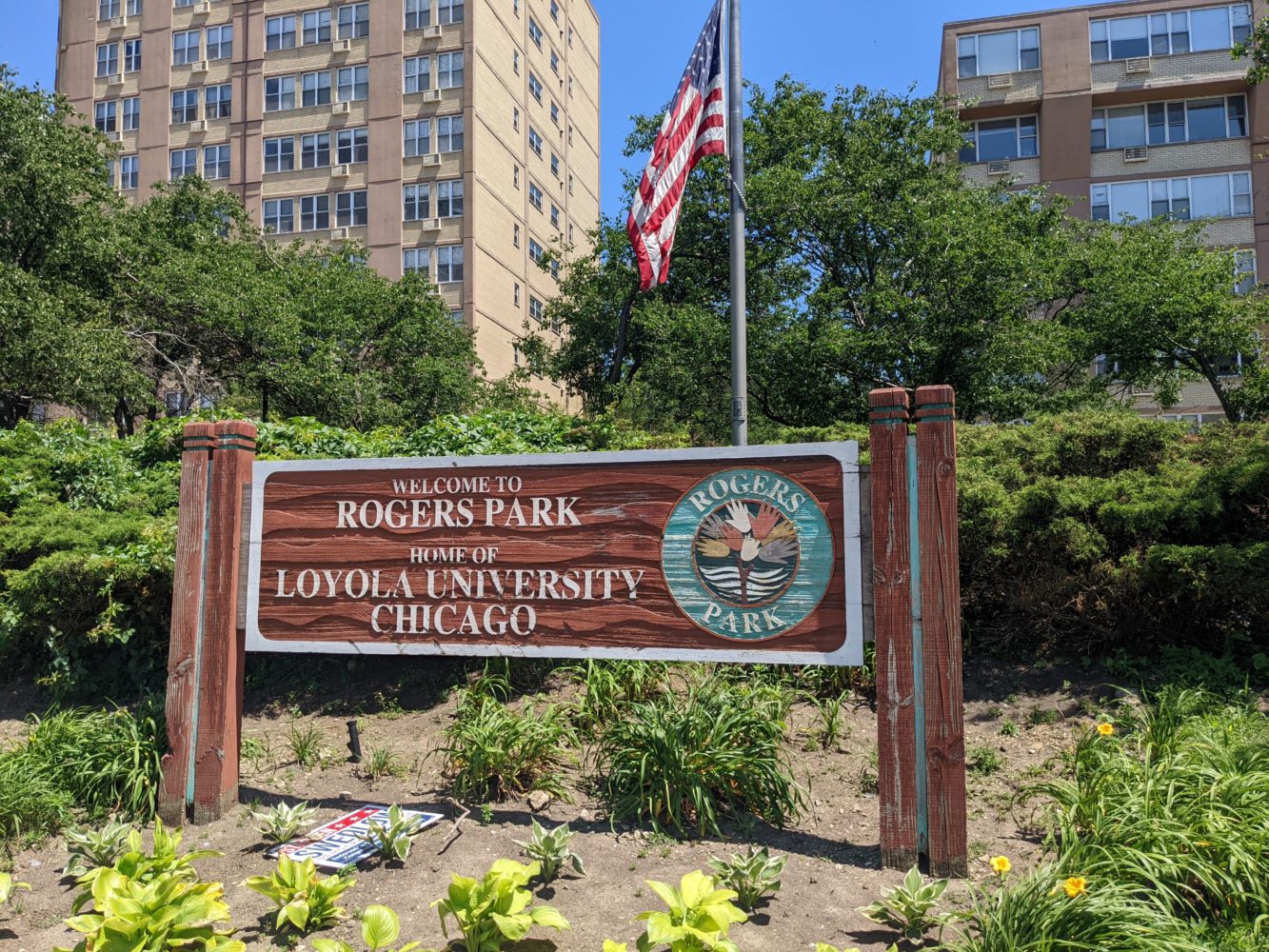
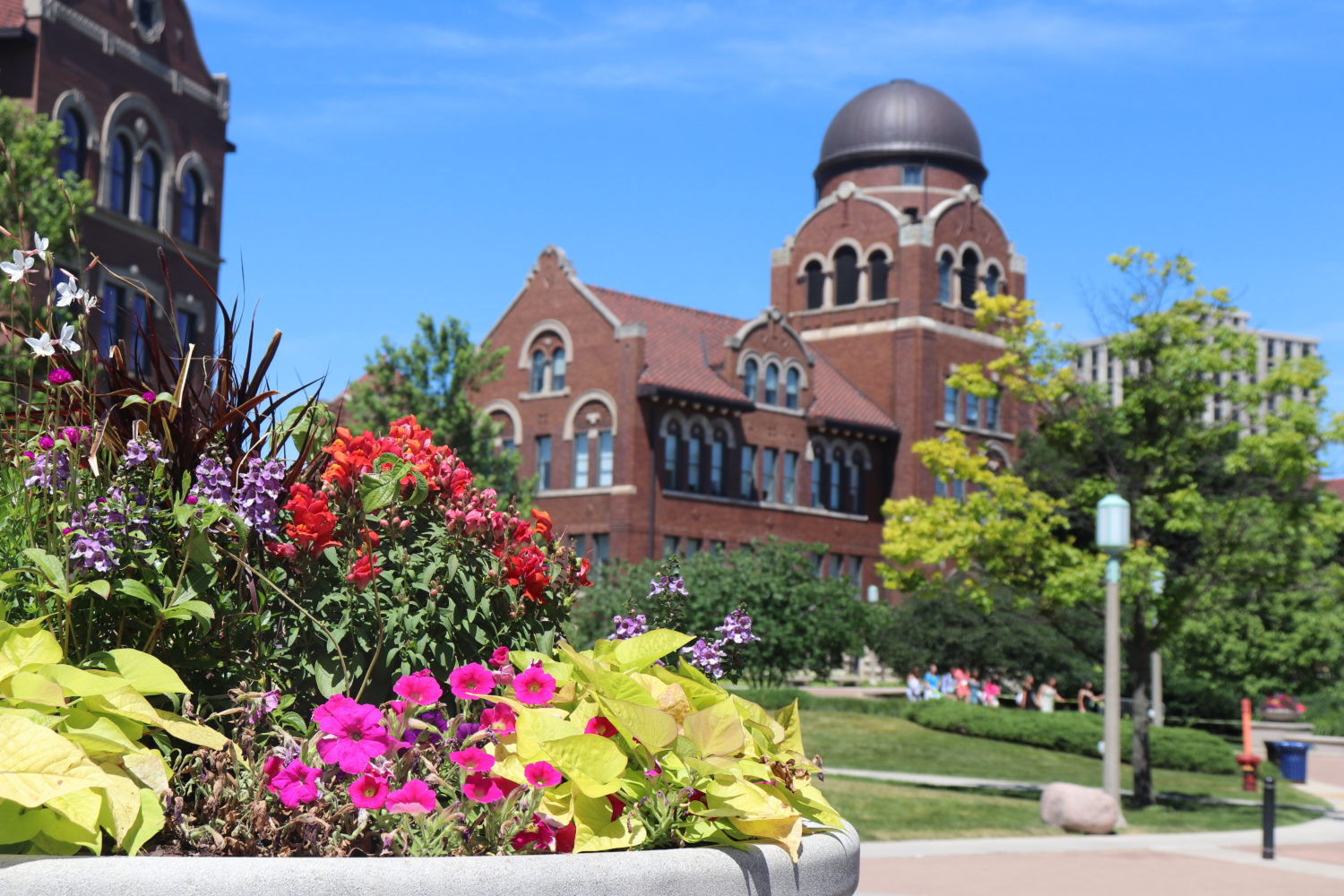
Loyola’s academic buildings, chapel, and waterfront pedestrian path are all incredibly pretty. The school showcases a variety of architectural styles, including art deco motifs. I find Loyola to be very peaceful and relaxing. It’s a great first stop on a visit to Rogers Park!
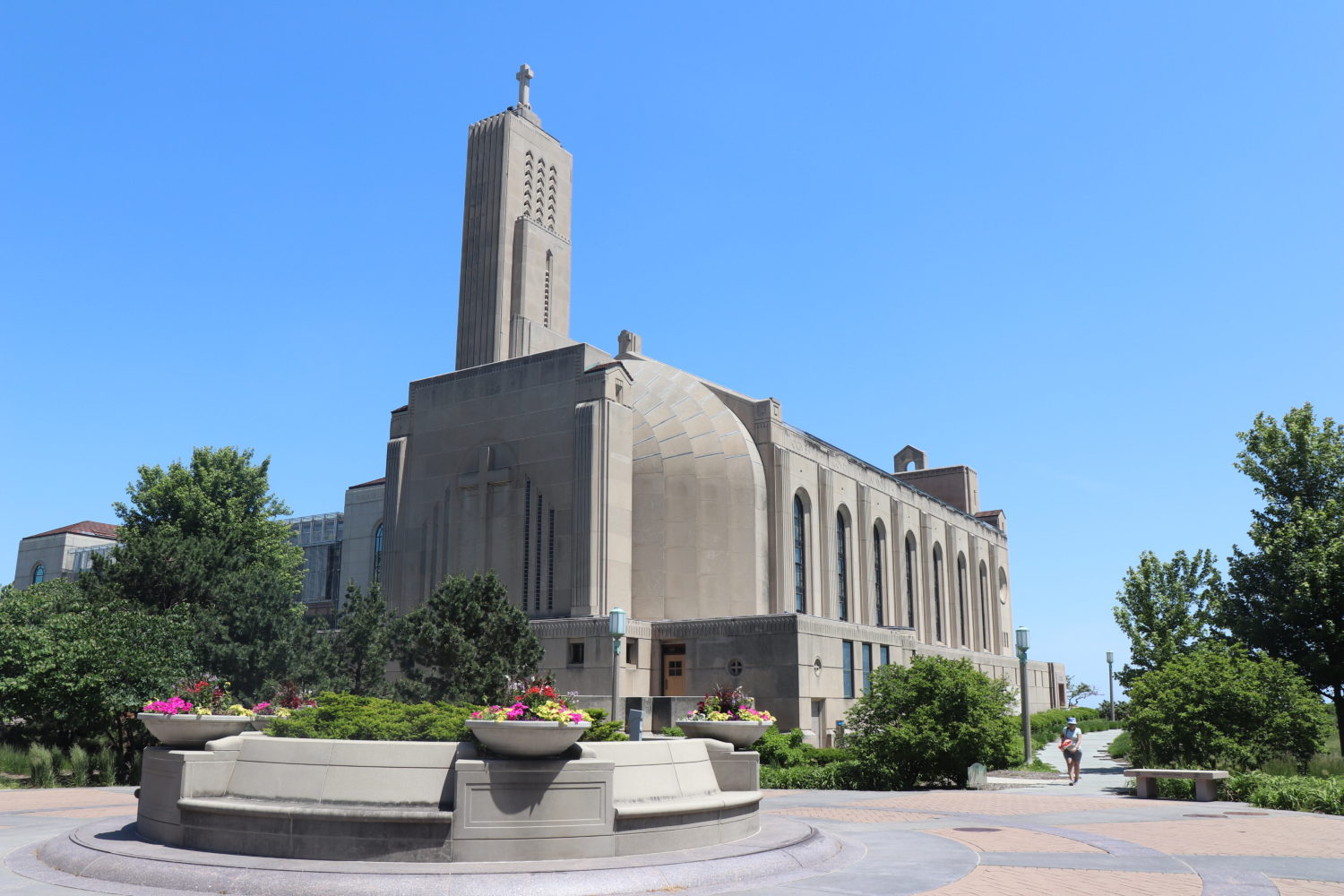
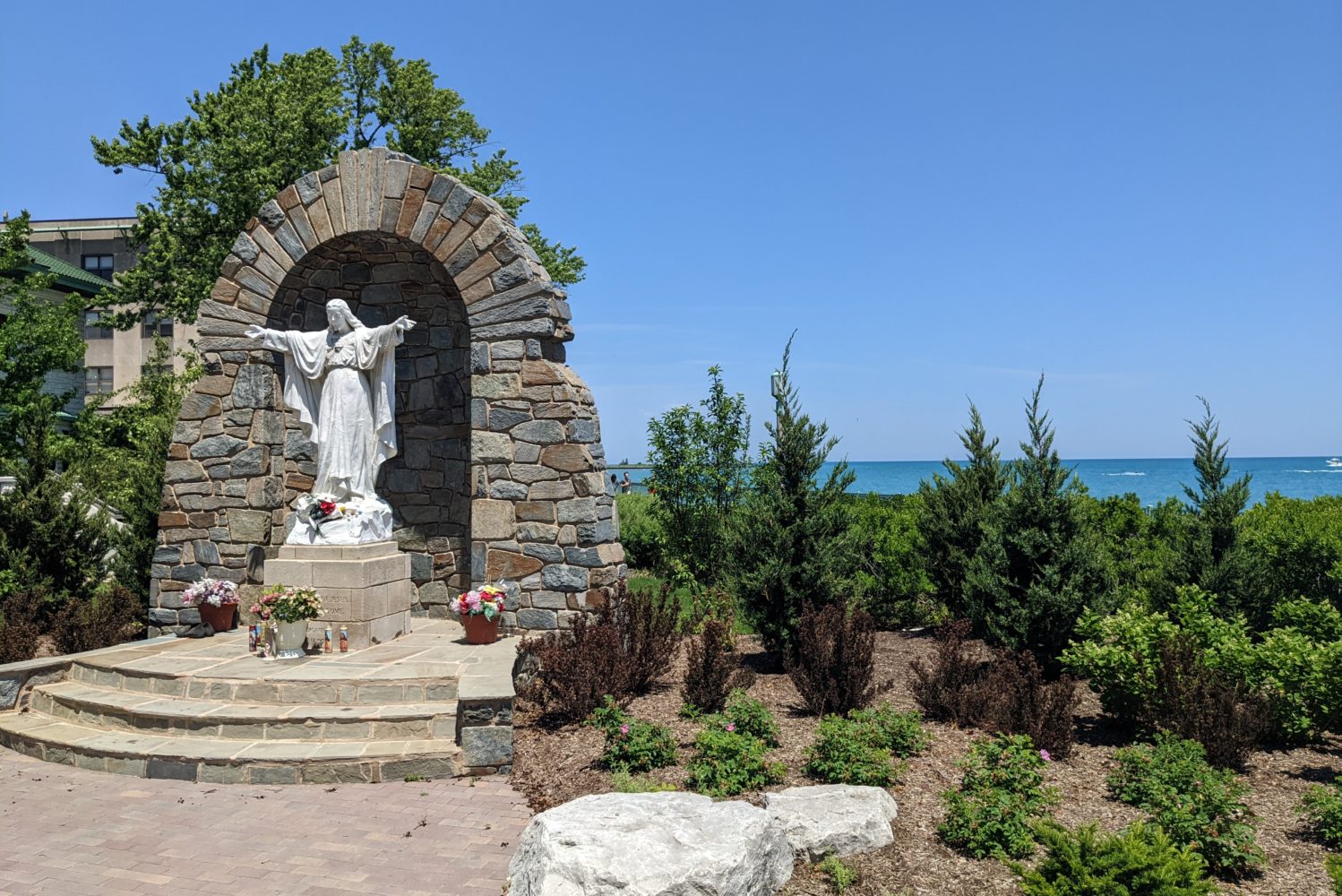
The Lakefront
One of the best things about Rogers Park is its gorgeous shoreline along Lake Michigan. The neighborhood is far enough away from downtown Chicago that the beaches here are never packed. A significant portion of the waterfront is public land, so it’s accessible for all to enjoy.
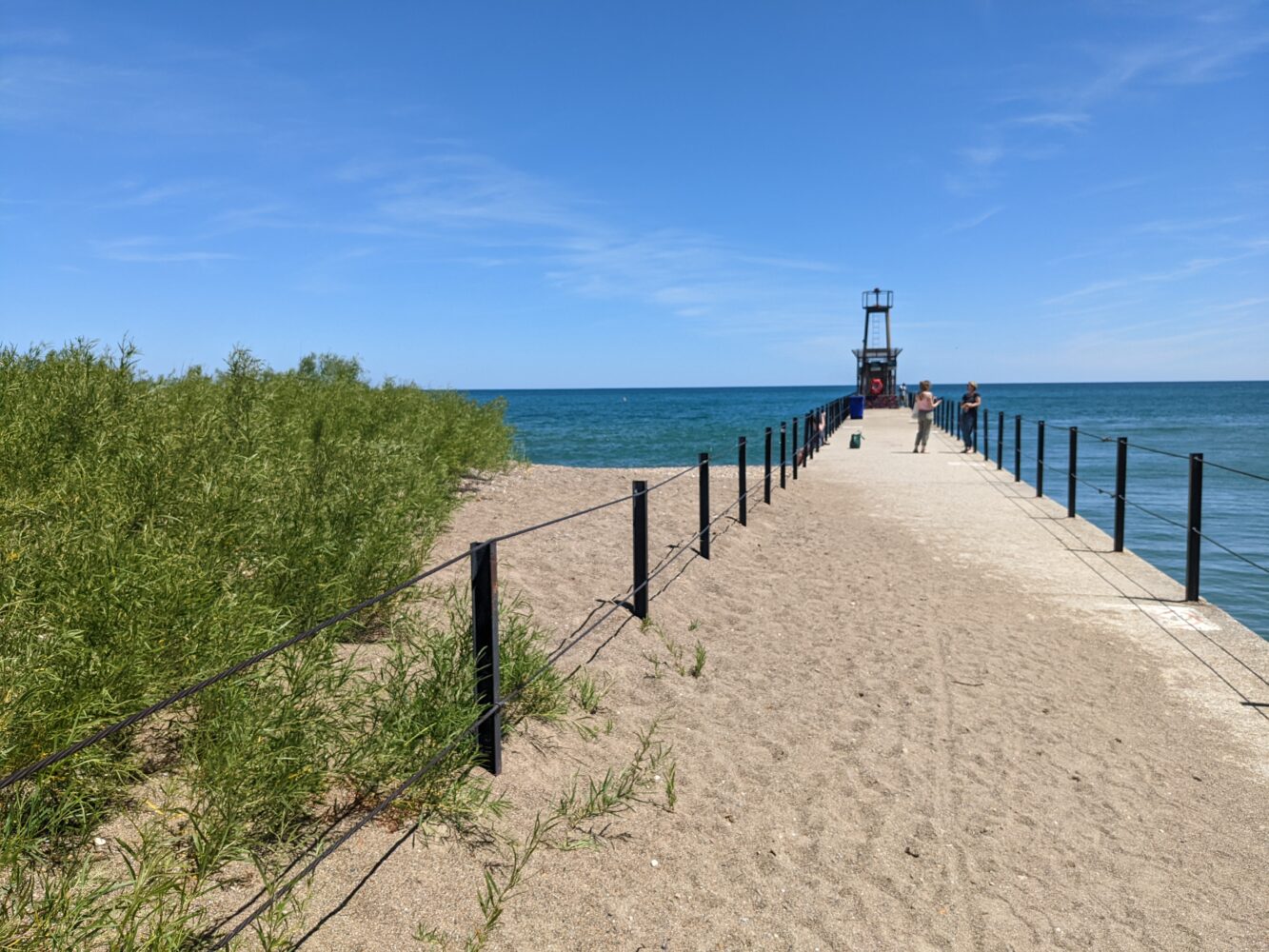
The largest and (in my opinion) best beach in the area is Loyola Beach, just a few blocks north of the university with the same name. It’s a long and wide stretch of sand that offers distant views of Evanston to the north and downtown Chicago to the south.
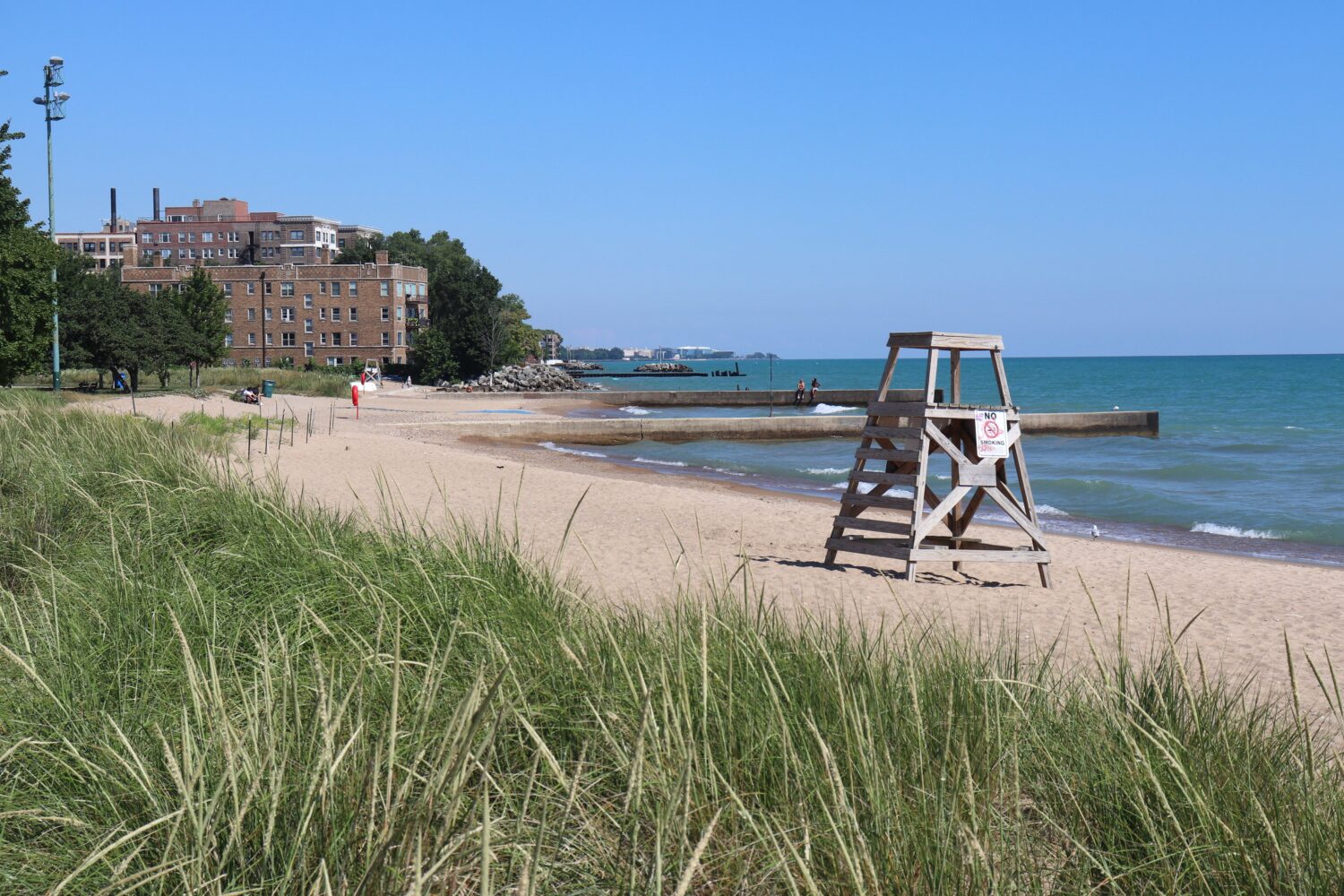
Adjacent to the beach further inland is Loyola Park. This large green space has multiple access points along North Sheridan Road. It also has all the amenities you might expect: sports fields and basketball courts, a little snack stall, a few trails, a playground, and restrooms open seasonally.
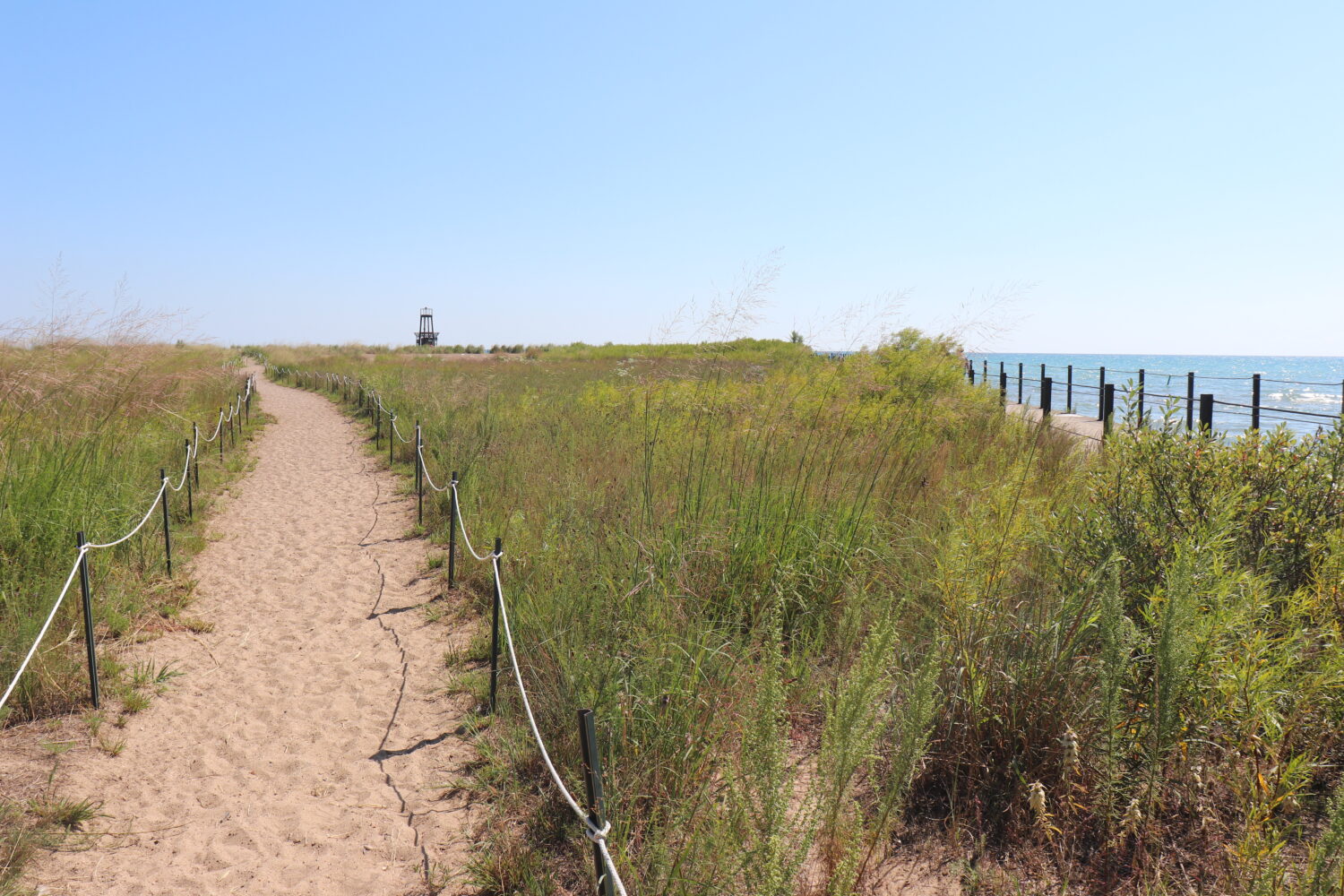
Perhaps my favorite thing about Loyola Beach is a massive art installation here called “Artists of the Wall.” It’s a massive mural running the length of the pedestrian path on the south end of the beach. It also functions as a long bench.
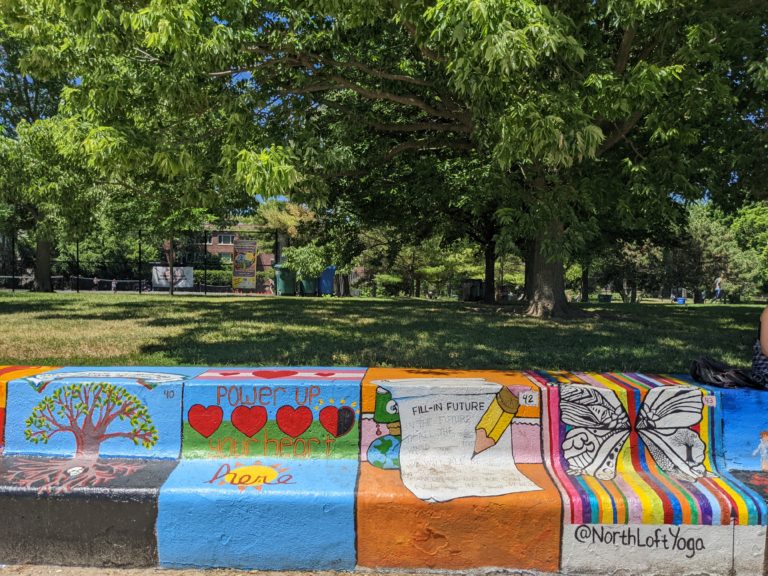
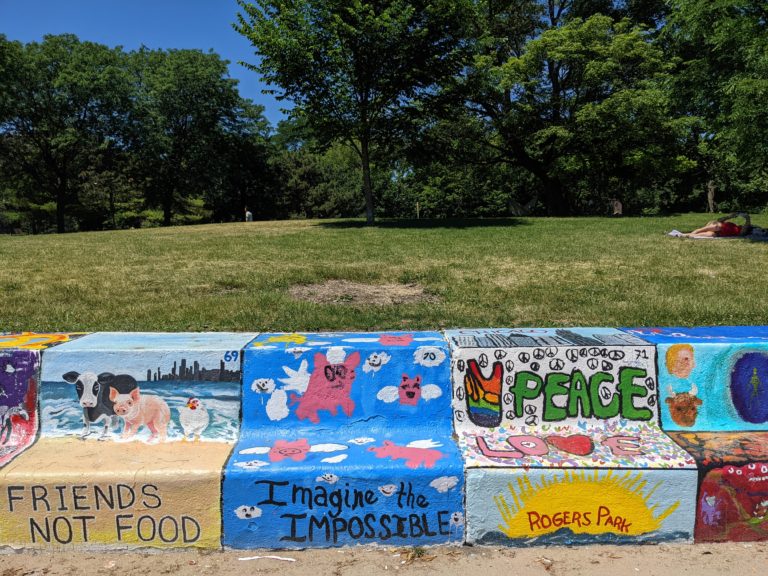
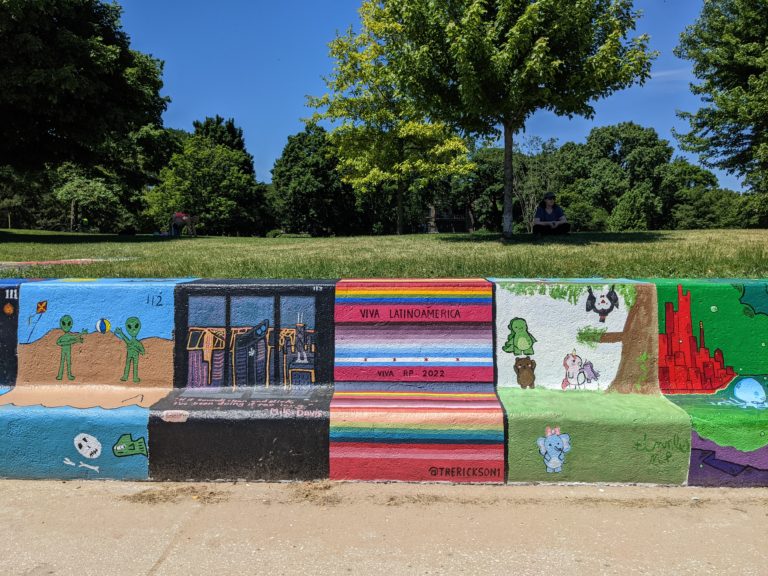
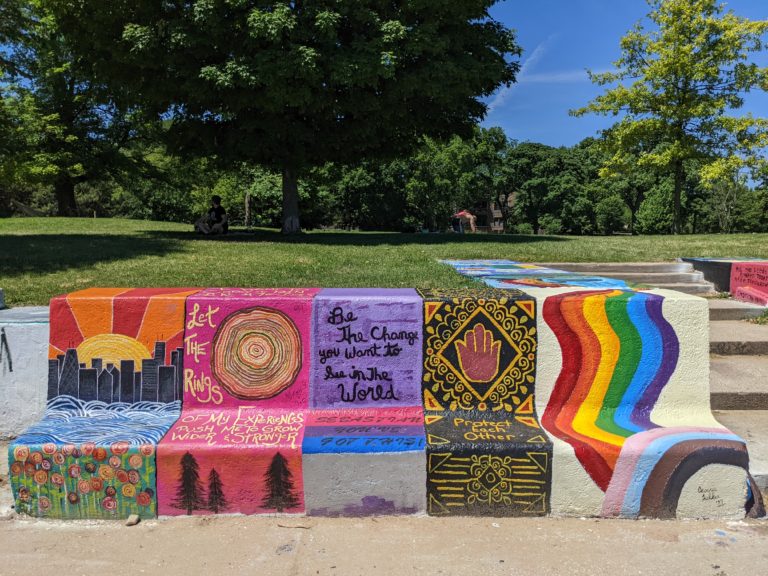
According to the Chicago Parks Foundation, over a hundred different artists are represented at Artists of the Wall. It is apparently updated yearly as part of a summer festival, so the work stays not only contemporary and relevant, but is also in very good condition despite natural weathering.
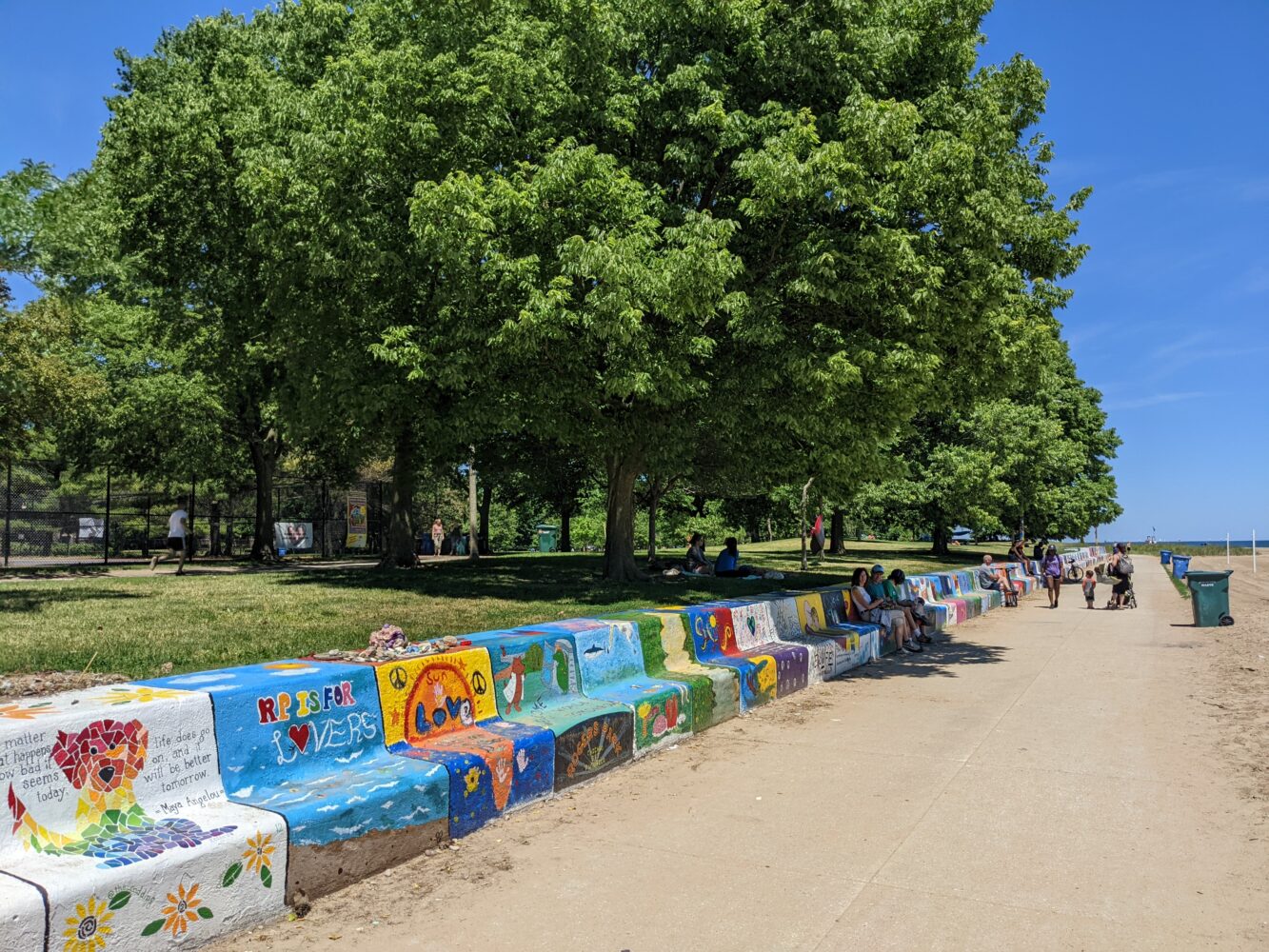
There are a handful of smaller beach parks further north of here (e.g. Jarvis Beach, Fargo Beach, and Howard Beach). I’ll be honest: I don’t think any of them are as impressive as Loyola. However, the nice thing about these smaller beaches is that they rarely if ever have more than a few visitors at any given time, even on nice days.
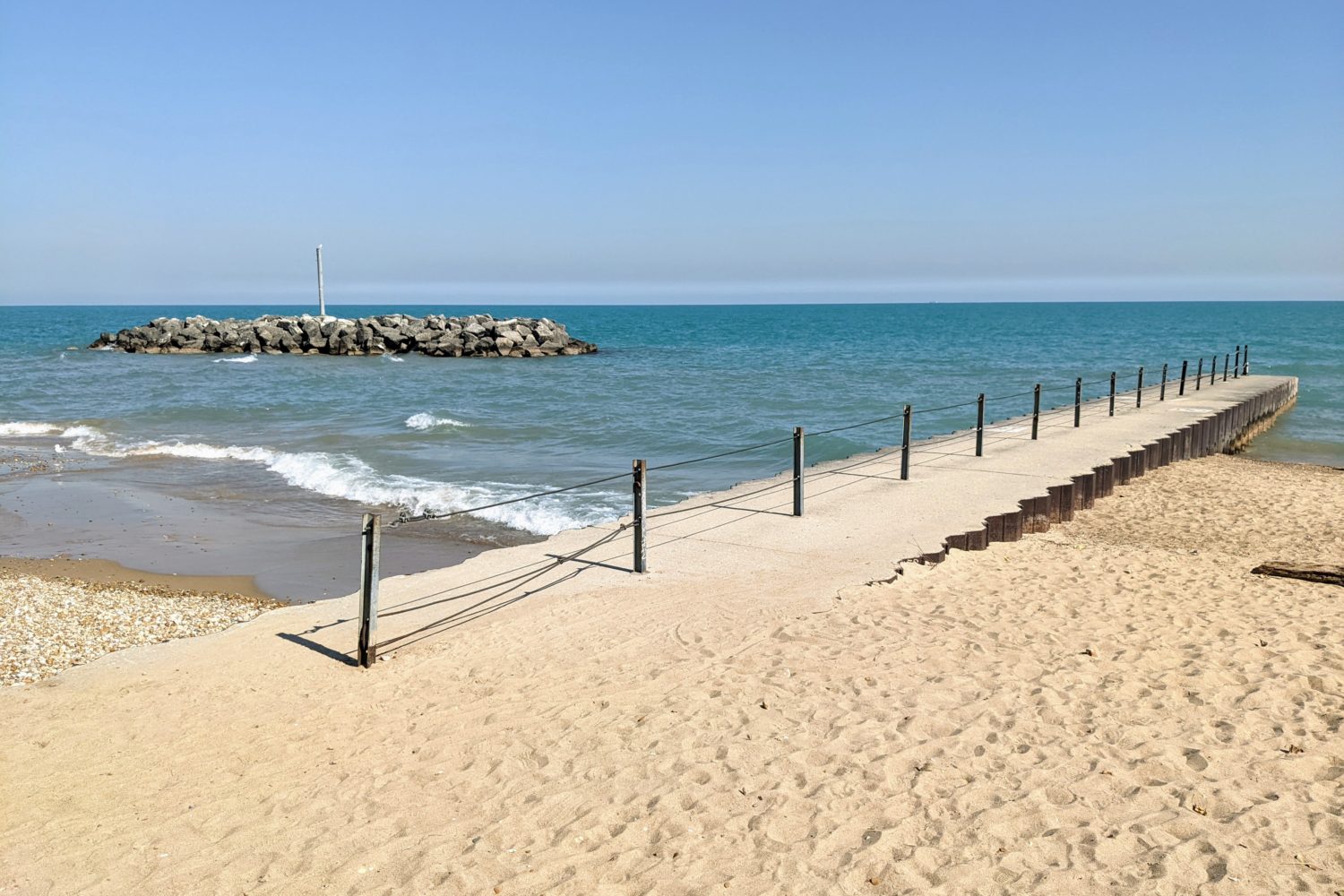
North Clark Street
Clark Street is actually one of Chicago’s most prominent and important roadways that runs north-to-south. It begins south of the Loop near Chinatown and turns into Chicago Avenue once it hits the border with Evanston.
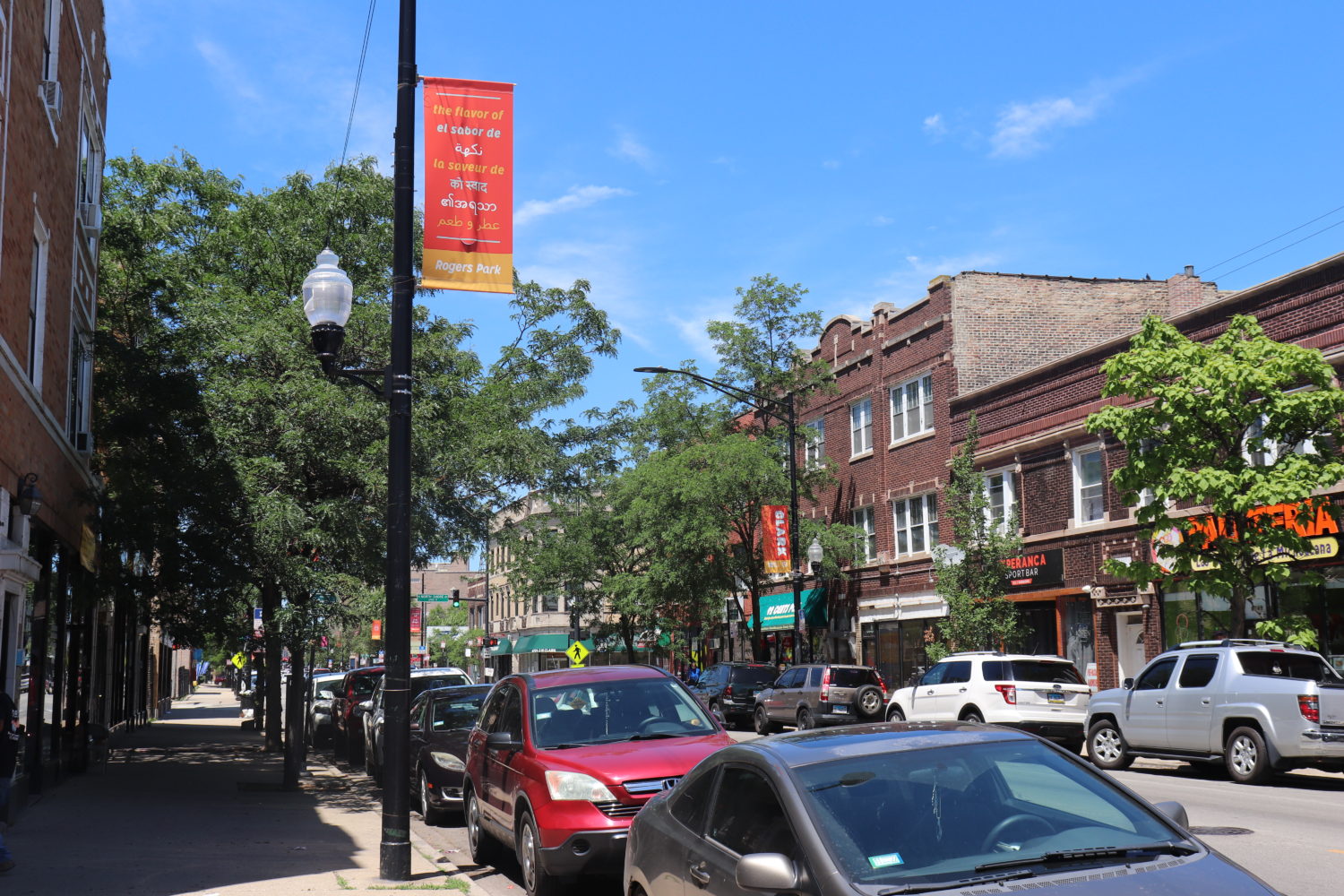
In Rogers Park, Clark Street serves as the neighborhood’s main commercial center. Businesses line both sides of this bustling avenue along its entire length. Many (but not all) of the best restaurants in Rogers Park are clustered on Clark.

If you’d like to learn more about Rogers Park’s burgeoning food scene, use the image link below to read my restaurant guide!
North Sheridan Road
This busy street functions as the main access point to the many public beaches in Rogers Park. Turn east at any point along Sheridan, and Lake Michigan will only be a few hundred feet away. Given its proximity to the waterfront, homes and apartments along Sheridan tend to be a little more luxurious than in other parts of Rogers Park.
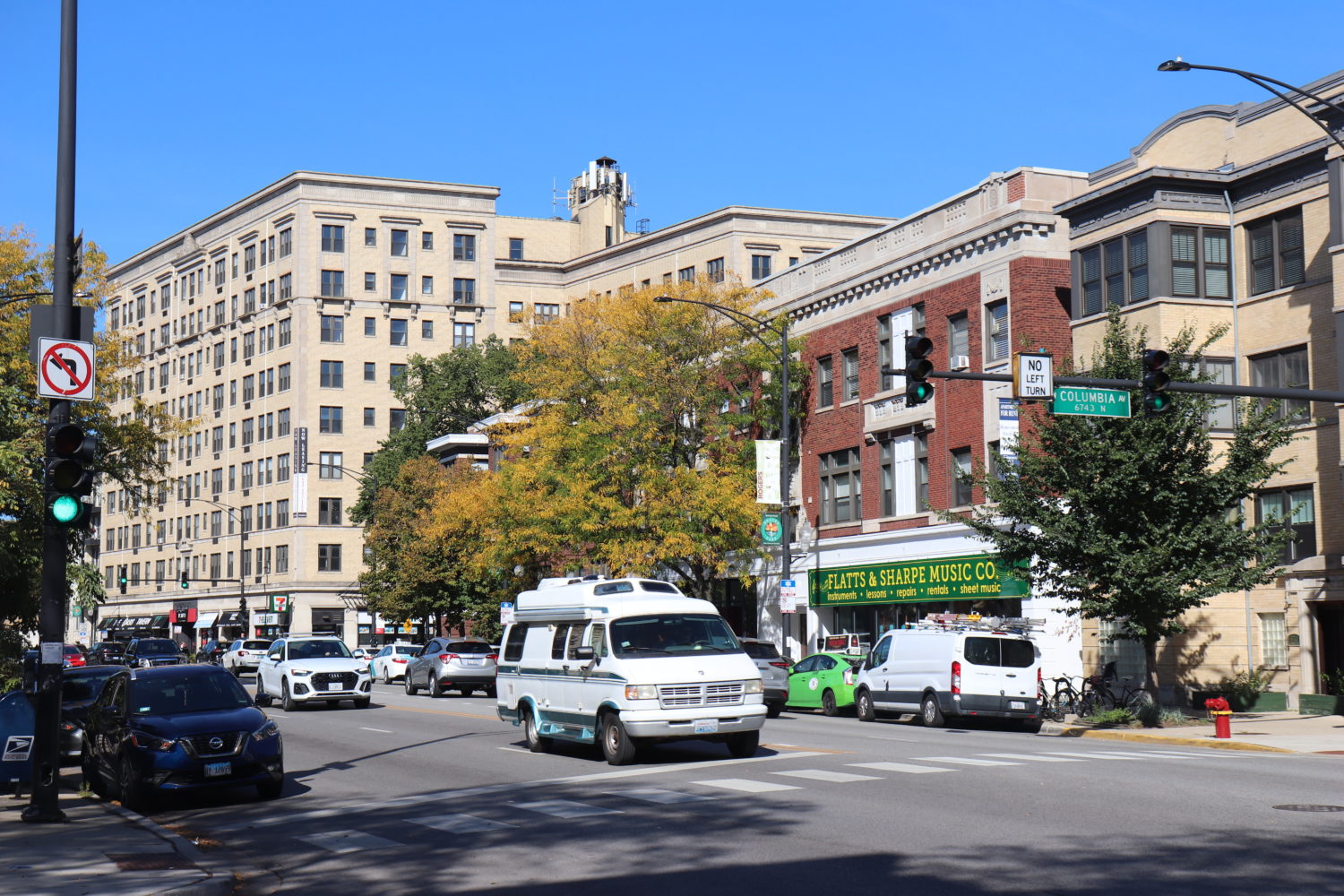
Down by Loyola University, Sheridan is home to a small college town with a few local eateries, bars, and entertainment venues. However, Loyola is relatively small compared to some other universities in the Chicago area (such as Northwestern in Evanston or UIC in the Near West Side). As such, students hangout spots are limited to the few blocks surrounding the college campus.
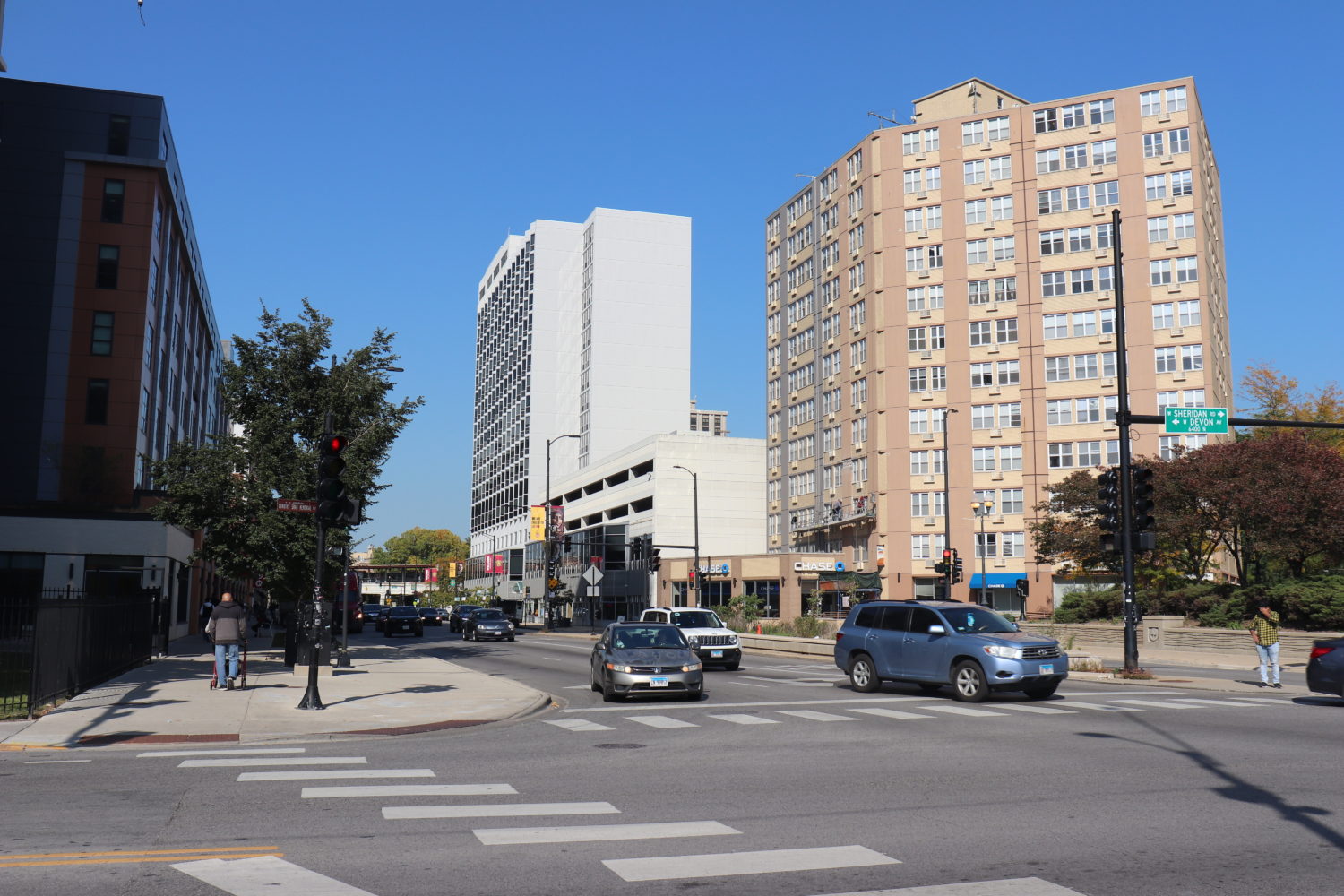
Morse CTA Station
A little “village” that surrounds the Morse CTA Red Line Station is one of Rogers Park’s hidden gems. The area is home to a few trendy bars and theaters, but they’re all pretty low-key. If you’re looking to intermingle with Rogers Park locals, this is where you’ll want to go!
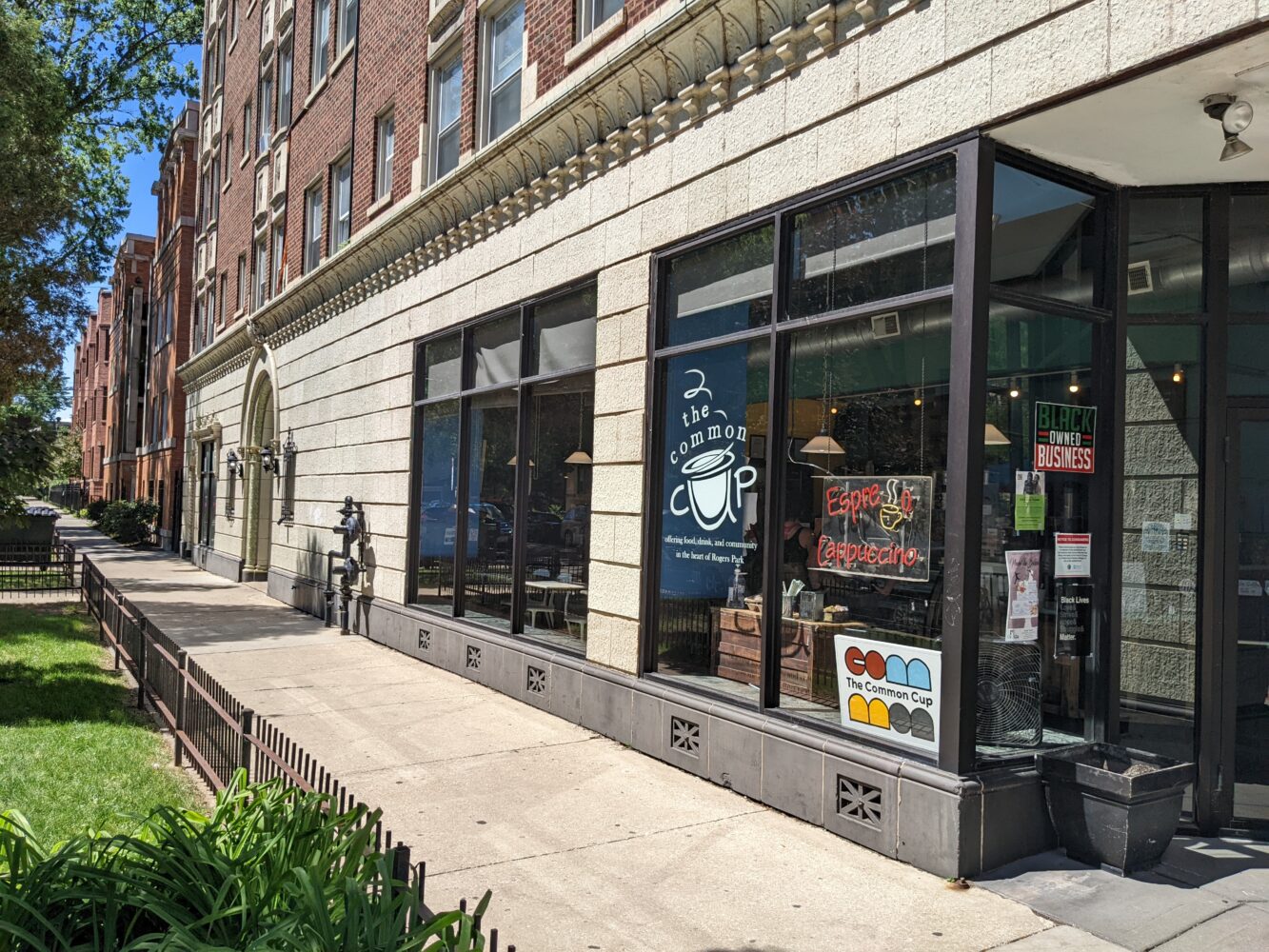
Morse is also the focal point of Rogers Park’s incredible art scene. That’s because the “Mile of Murals” is located right off of the CTA Station. Much like Artists of the Wall at Loyola Beach, the Mile of Murals is a community project that is constantly being updated. It features long stretches of painted concrete wall that run parallel to the train tracks along North Glenwood Avenue.
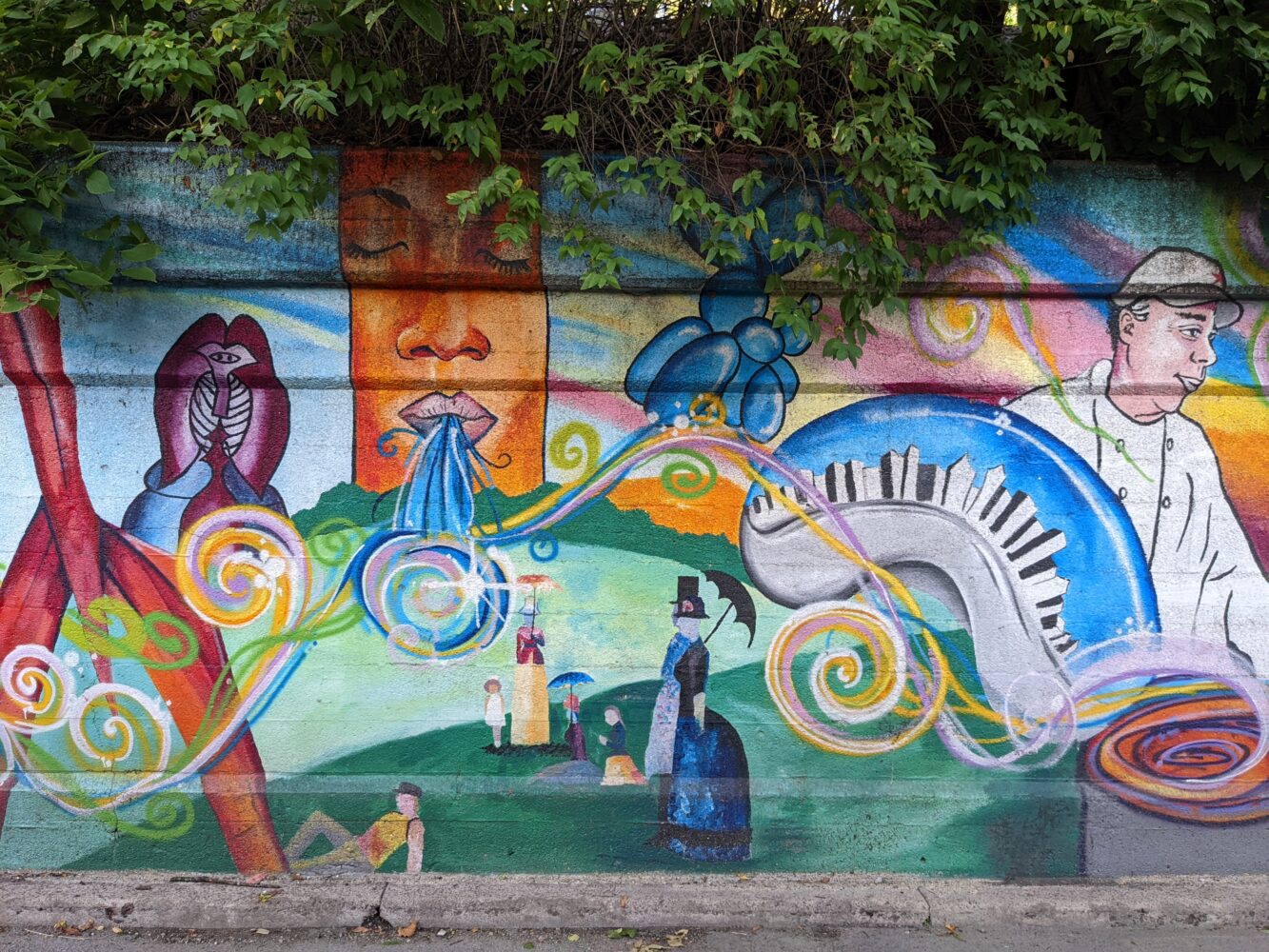
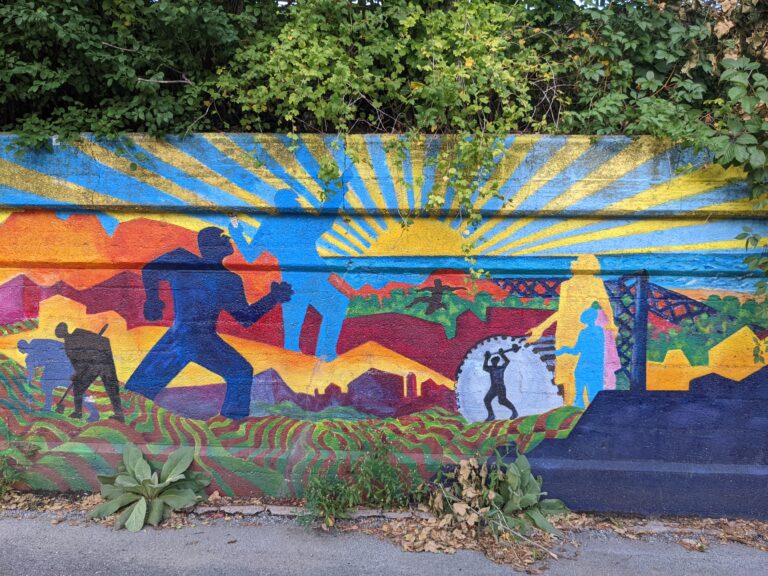
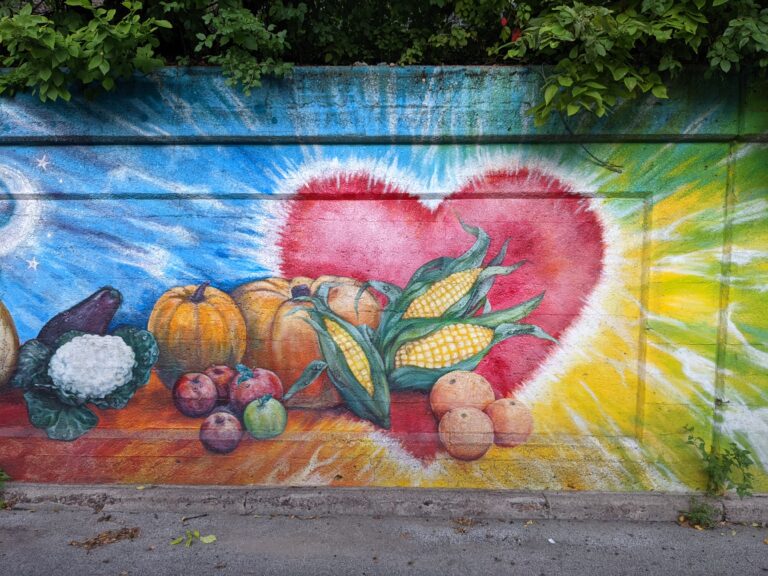
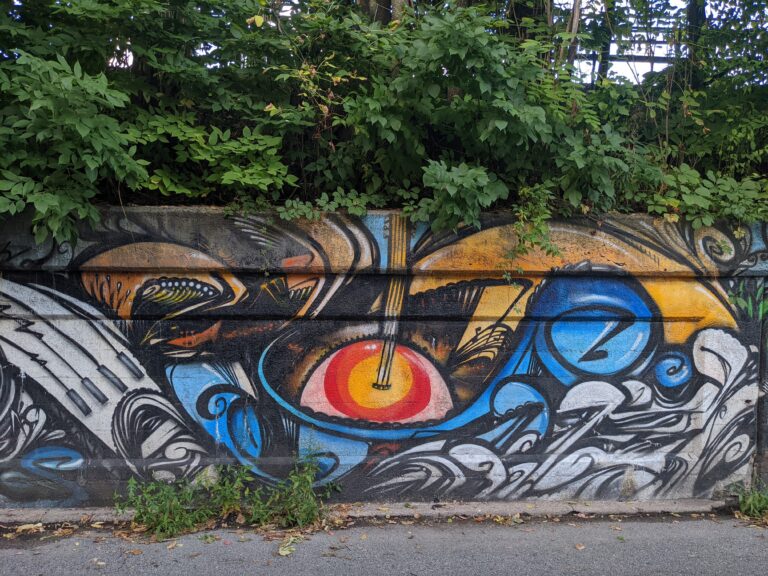
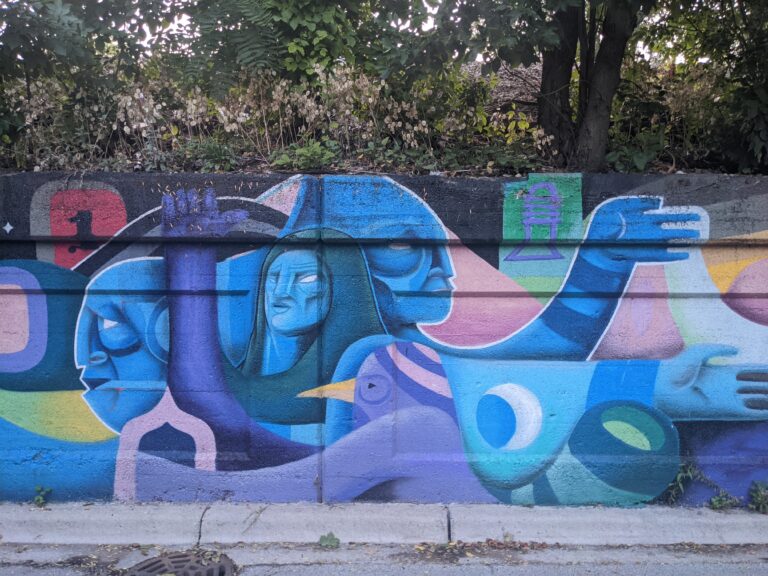
The art scene in Rogers Park is not limited to the Mile of Murals, however. In fact, almost every underpass in the neighborhood is painted in some way or another. Some public art displays are in better condition than others, but all of the work is inspiring and incredibly unique. Most of it has a local flare, too!
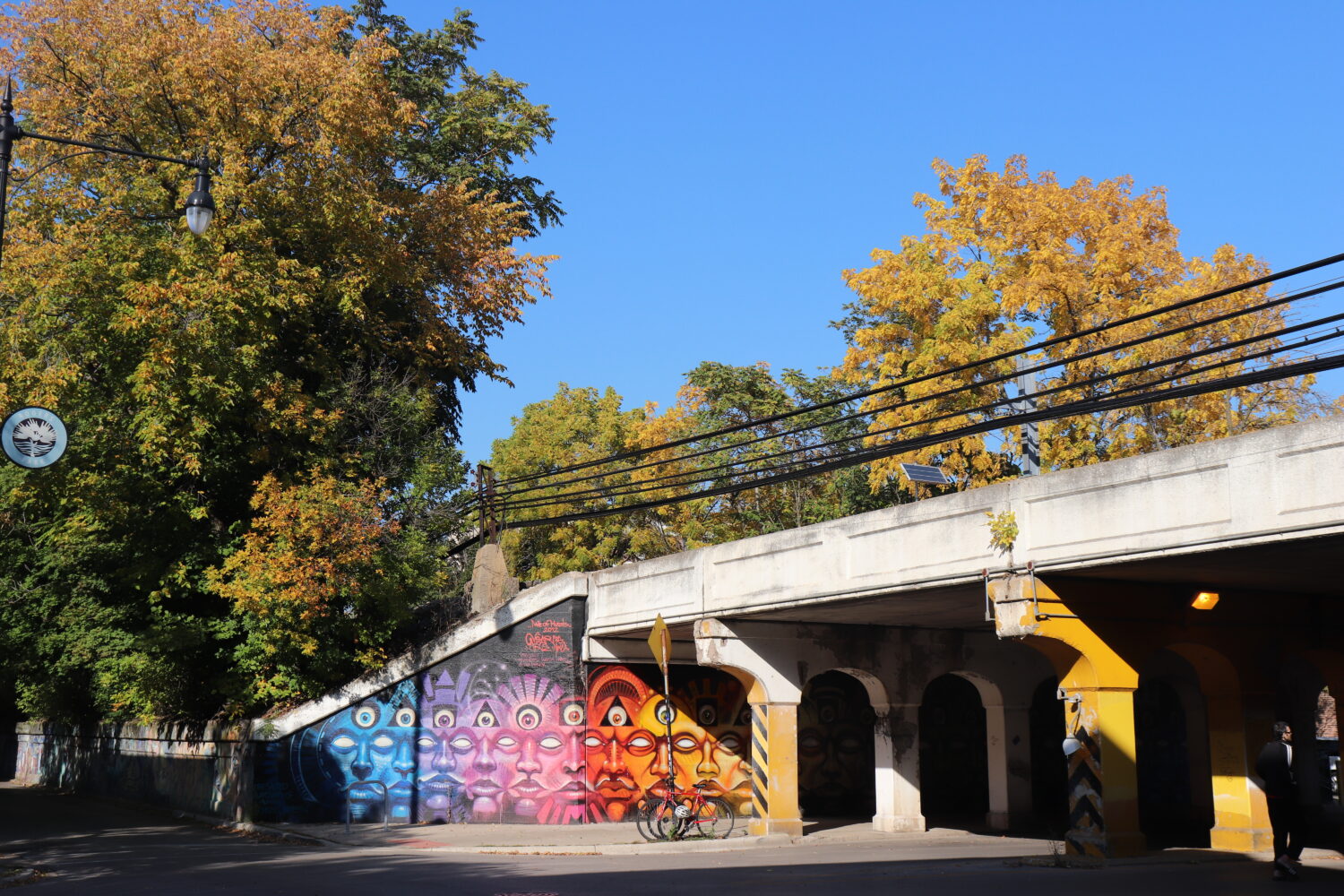
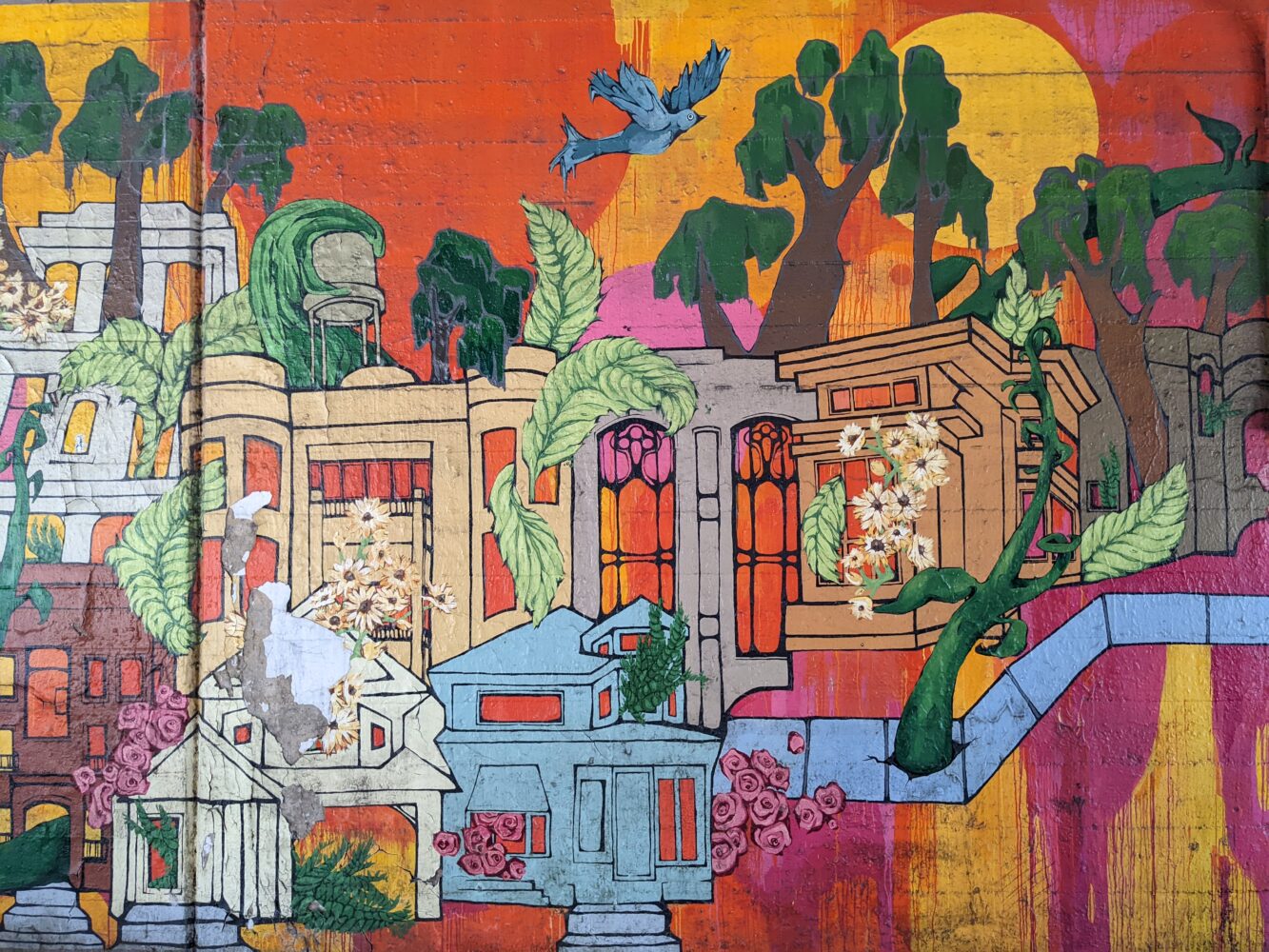
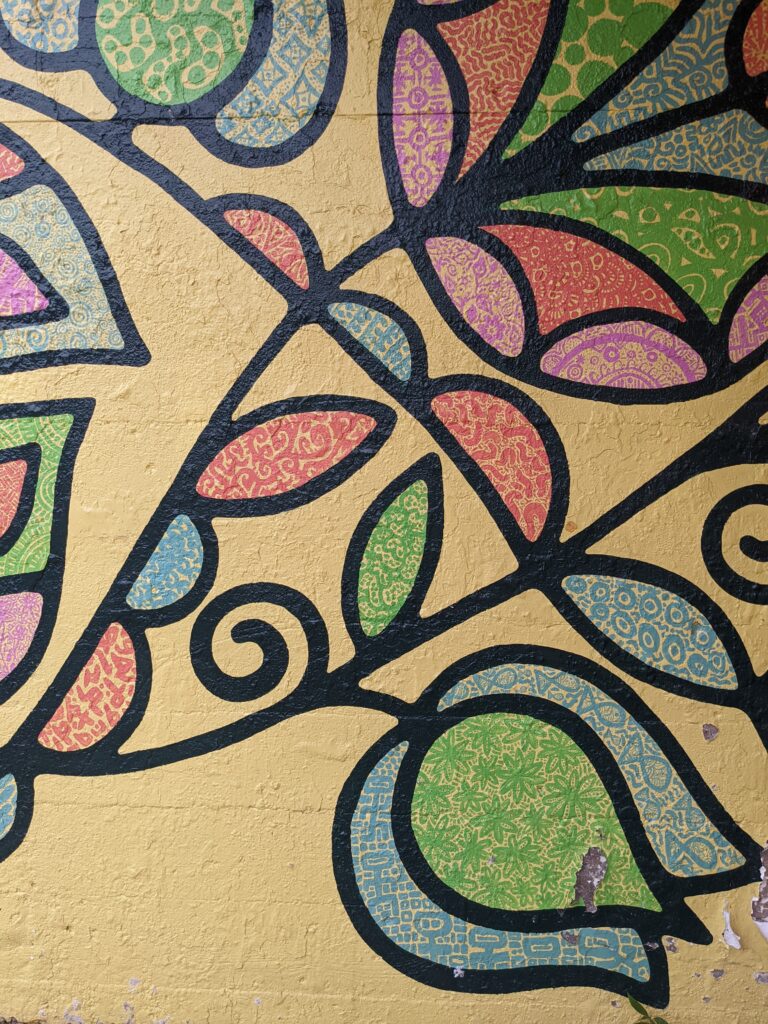
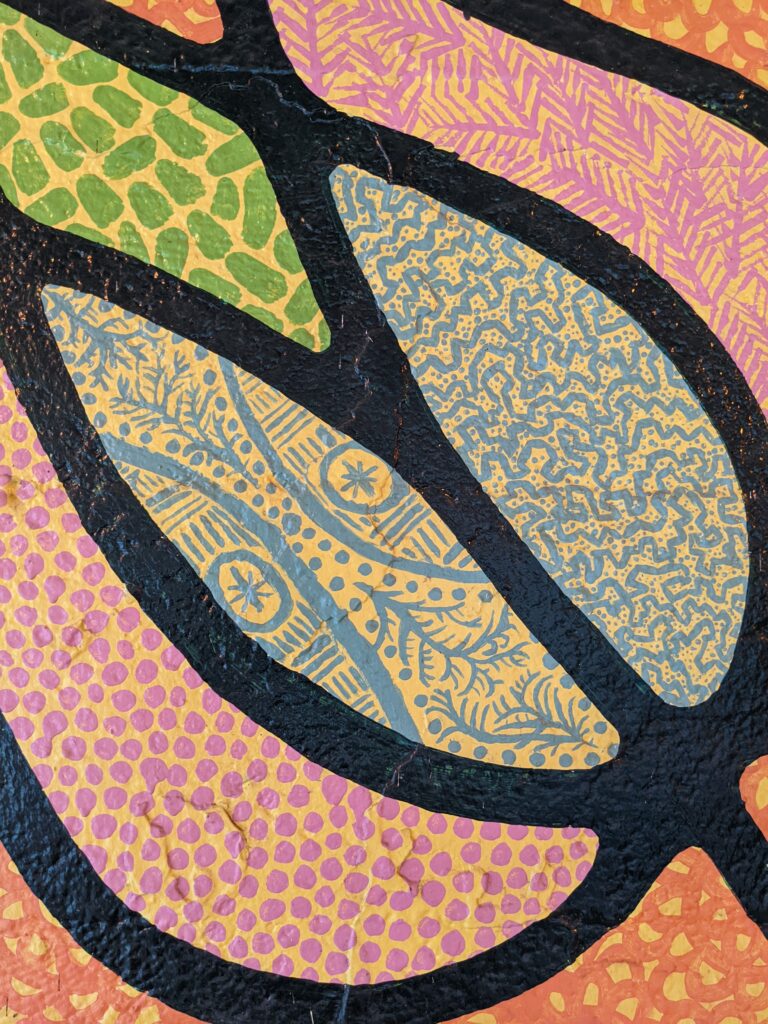
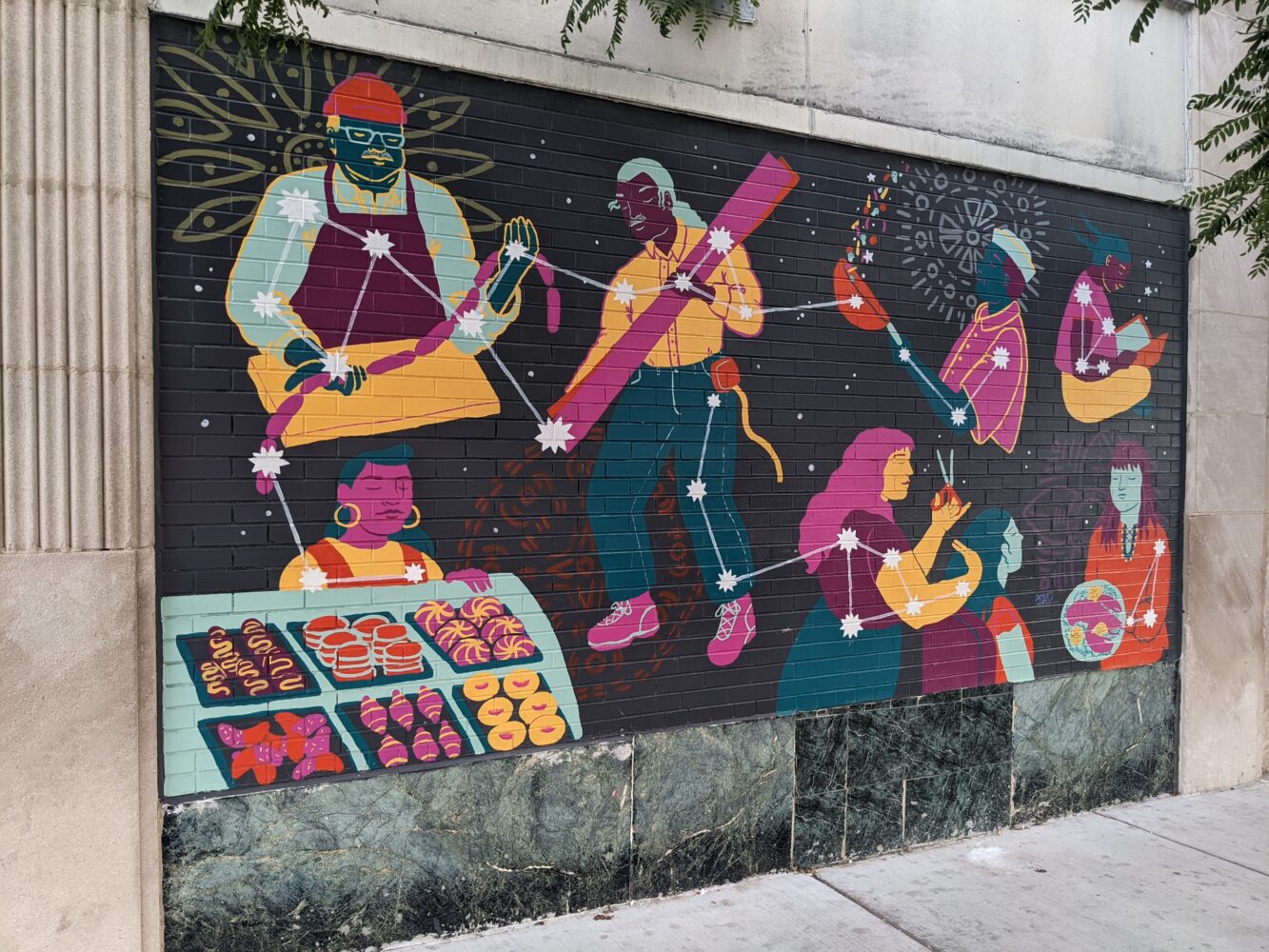
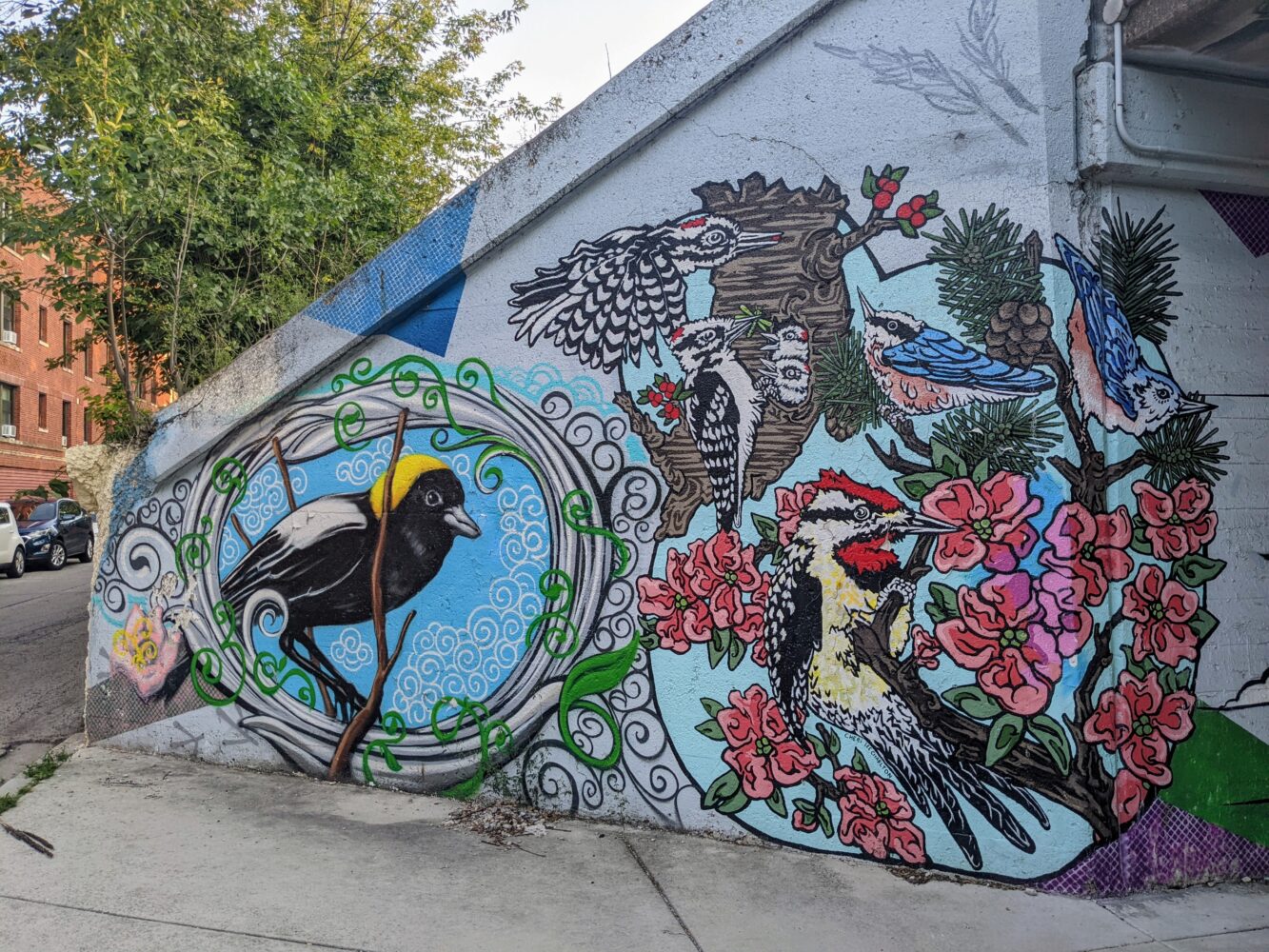
Jarvis Square
One CTA stop north of Morse is Jarvis. The little cluster of businesses here known as Jarvis Square feels even more local than the village at Morse. Jarvis Square is basically a bar, a café, and a few restaurants. I’ve tried the coffee shop and found it to be good, but a little expensive.
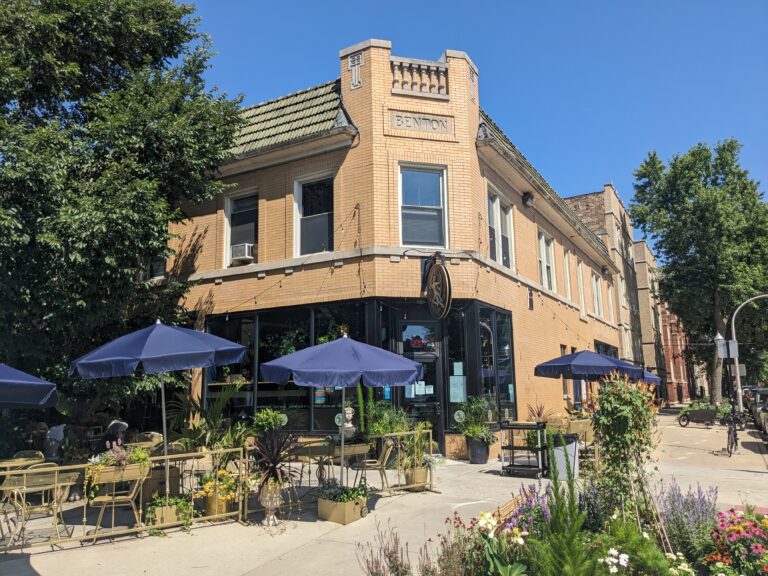
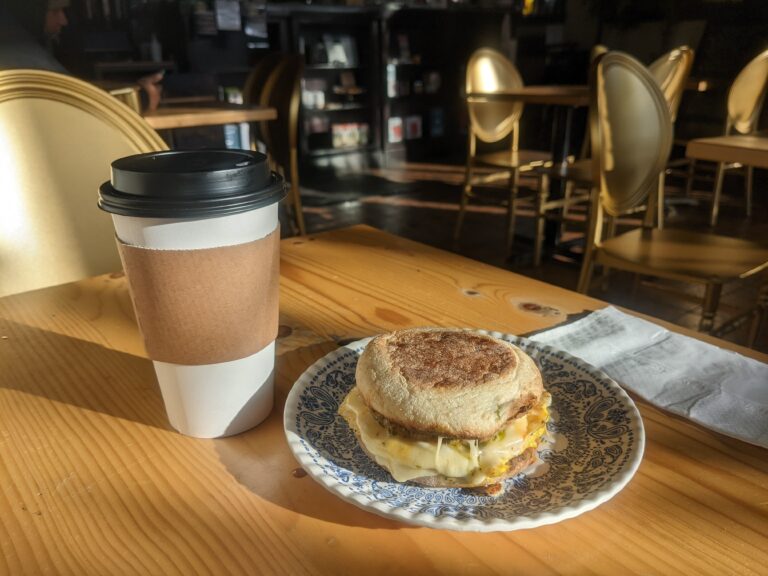
Is Rogers Park Safe?
I would say this part of Chicago is relatively safe, although it can sometimes feel sketchier than other parts of the North Side. Apart from the commercial areas featured in this post, Rogers Park is mostly residential. The neighborhood is best explored during the day (there isn’t a ton of nightlife here anyways). Take standard precautions as you would in any large city.
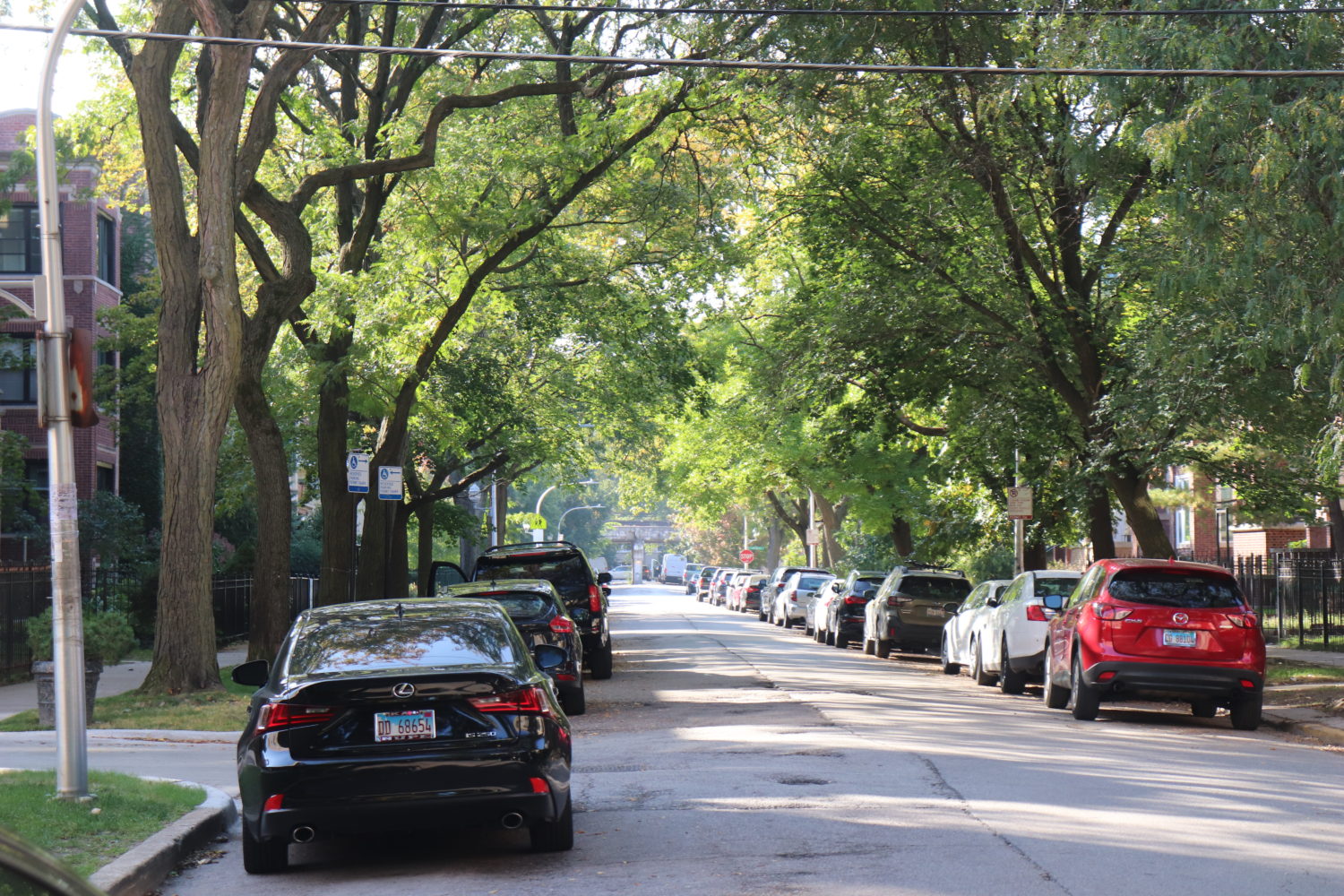
Visitors should remain alert on Rogers Park’s northern end. If you want to be extra cautious, avoid the area north of Rogers Avenue and east of Clark Street. There aren’t as many restaurants or attractions up that way, so it’s not like you’d miss out on much. In particular, the stretch of West Howard Street between the lake and Clark Street can be dicey. The same goes for the little section of Rogers Park north of Howard.
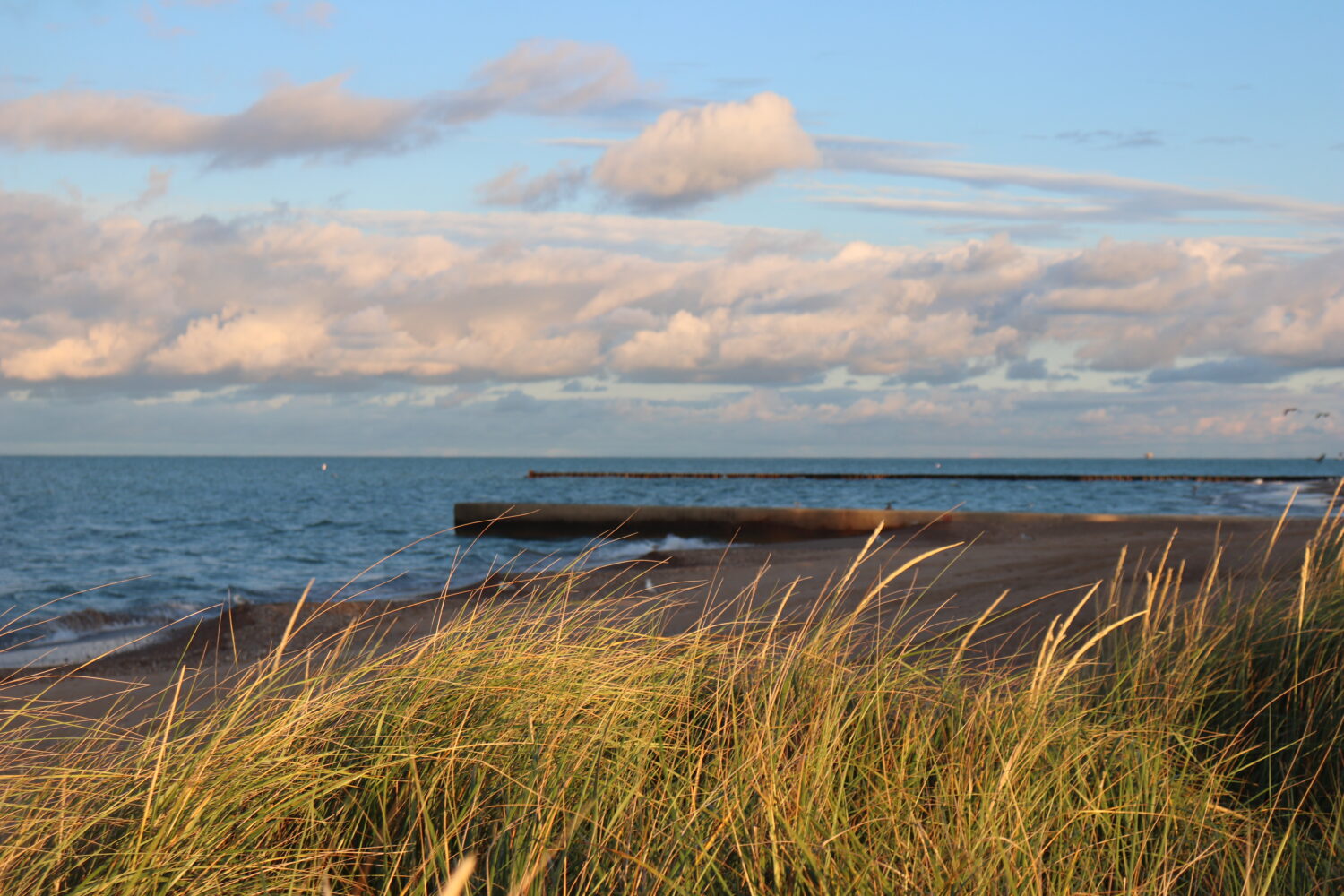
In terms of CTA stations, I would recommend visitors get off and on at Loyola, Morse, or Jarvis. Howard Station is fine for transferring to the Yellow and Purple Lines, but the immediate vicinity of that station can be iffy. Furthermore, since Howard is the terminal station for the Red Line, it can be confusing in ways that other CTA stations are not.
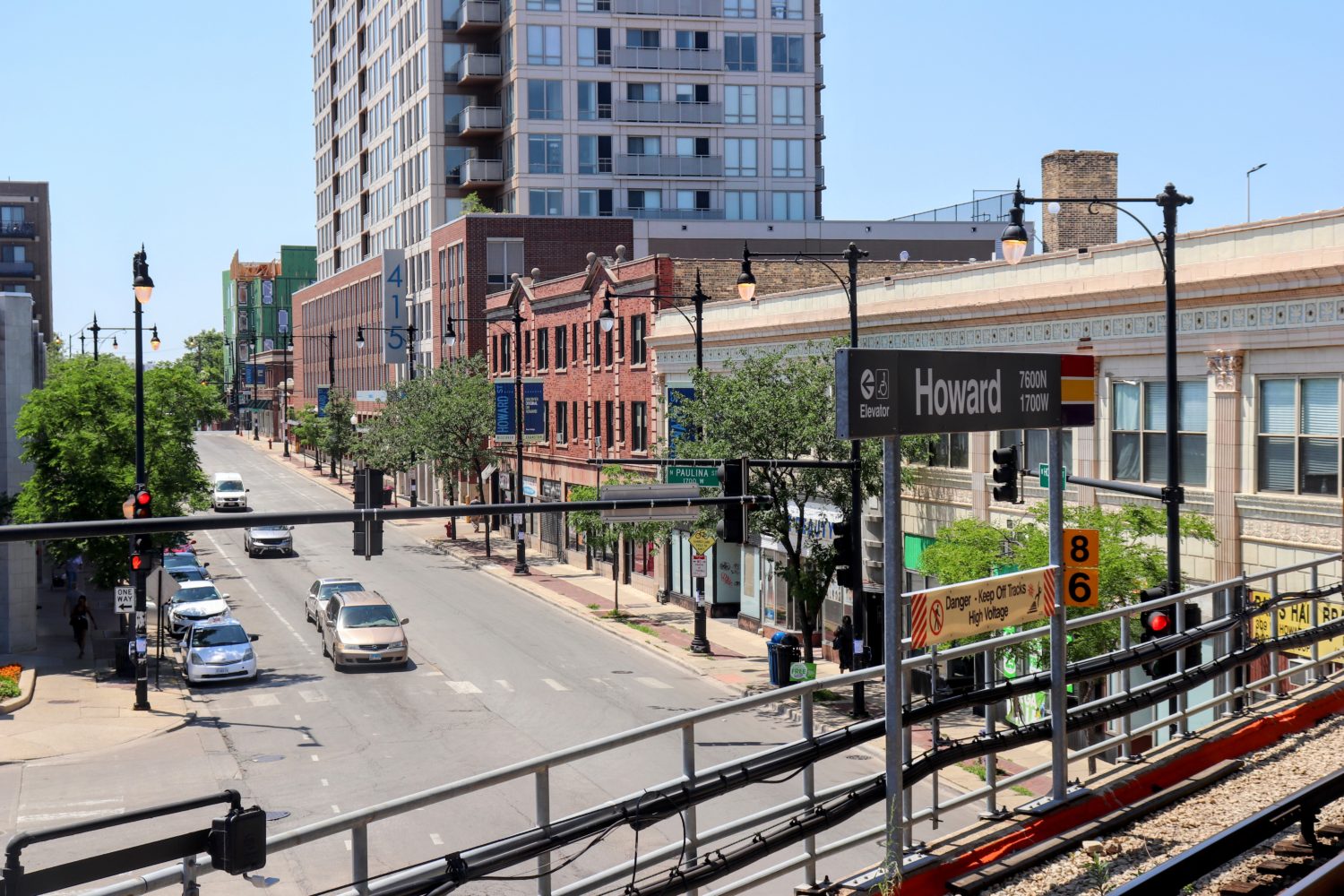
What Makes Rogers Park Unique?
Rogers Park was recently nominated as one of the best places to live in the US. Any ranking like that is obviously open for debate, but I do believe the neighborhood is one-of-a-kind. It stands out among Chicago’s many awesome community areas to explore!
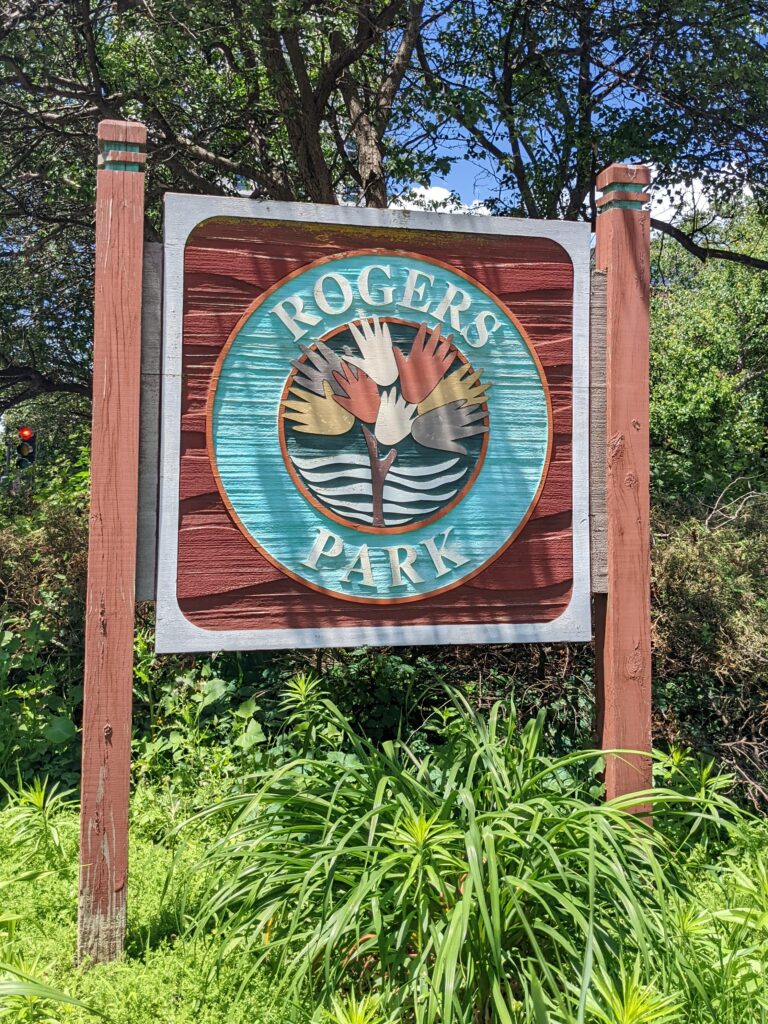
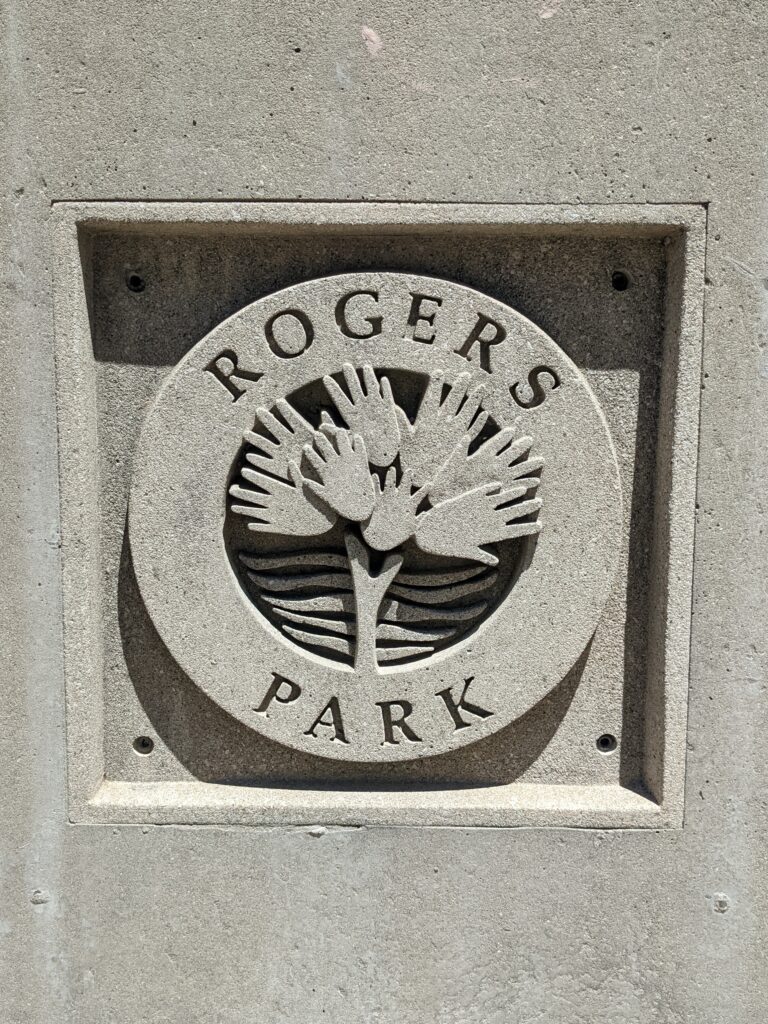
Anyone who loves international food, art, and multiculturalism will find Rogers Park worth visiting. It’s a quirky part of town, where things simultaneously seem like they’re flourishing and struggling. Ostentatious mansions and low-income housing can be found on the same block. Bustling cafes are often right next to empty, dusty storefronts. All of these contradictions are what give Rogers Park its own unique identity. You can tell this is a place where people come together from all walks of life.
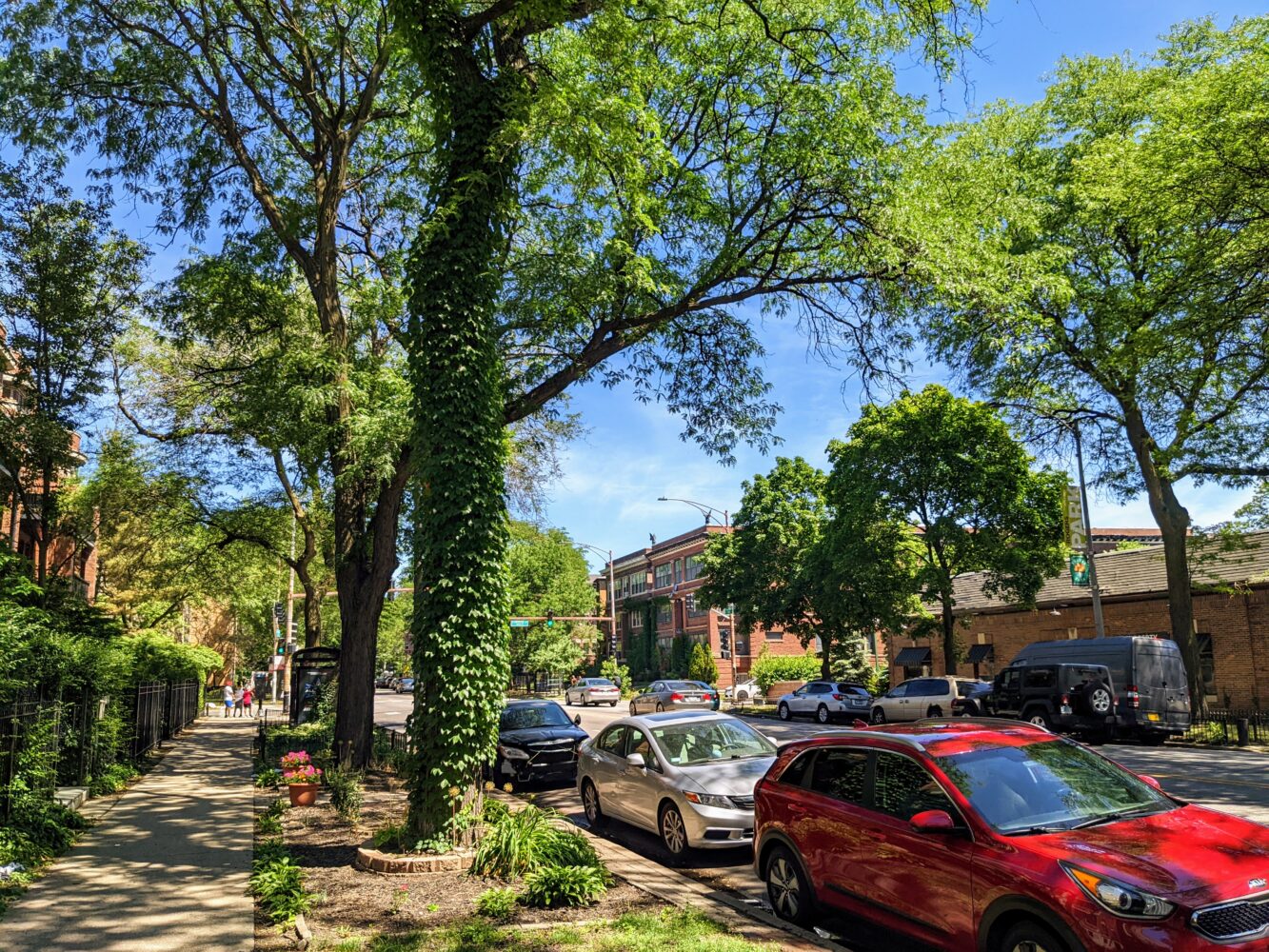
Have you ever spent time in Rogers Park? Did this blog post inspire you to go check it out? Leave a comment and let me know! Thanks for reading, and if you found this post helpful for exploring Chicago, be sure to check out some of my other Chicago neighborhood guides!
This post was published on Oct 15, 2022
Recent Posts
- Amtrak Borealis Review: Round Trip From Chicago To Minneapolis St. Paul
- Why You Shouldn’t Miss Devonport On Your Next Trip To Auckland
- 2024 End-Of-Year Summary & Sneak Peek 2025
- Get To Know The Washington, D.C. Metro Area: Neighborhoods And Food Scenes
- The Best Places To Eat, Drink, And Caffeinate In Portland, Maine
Meet Your Caffeinated Blogger: Kevin!

Hi, I’m Kevin! I’m a coffee addict from Seattle, and my life revolves around traveling! Caffeinated Excursions is a record of my trips over the past seven years. Since I started blogging, I’ve lived in Mexico, Vietnam, and Brazil. Chicago is my home base (although I’m planning on moving abroad again later this year). Thanks for checking out my blog!
Where I Am Now 
Categories
Upcoming Trips
- Muskegon, MI (May)
- Montreal, Canada (Summer)
- Taipei, Taiwan (Nov)
- My New Home Abroad! (2026, stay tuned for updates)


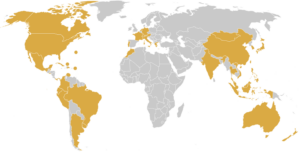
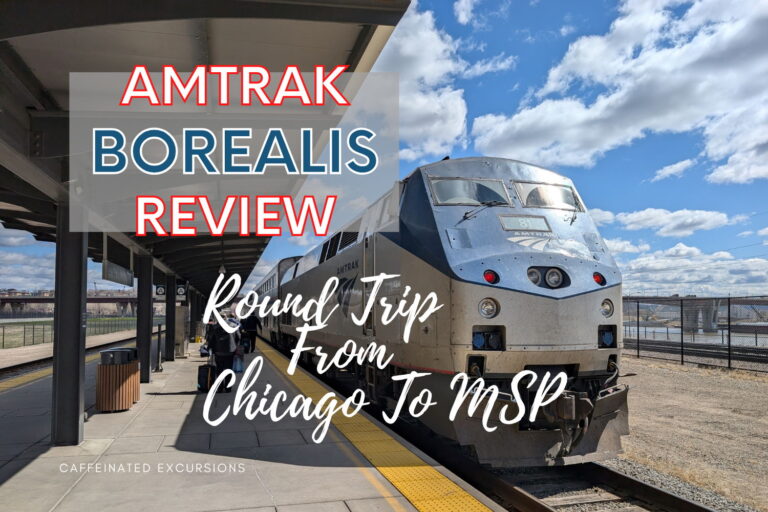
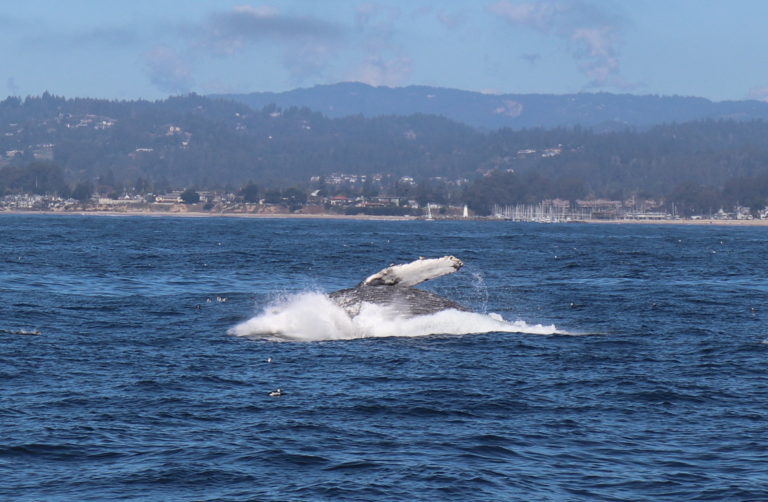
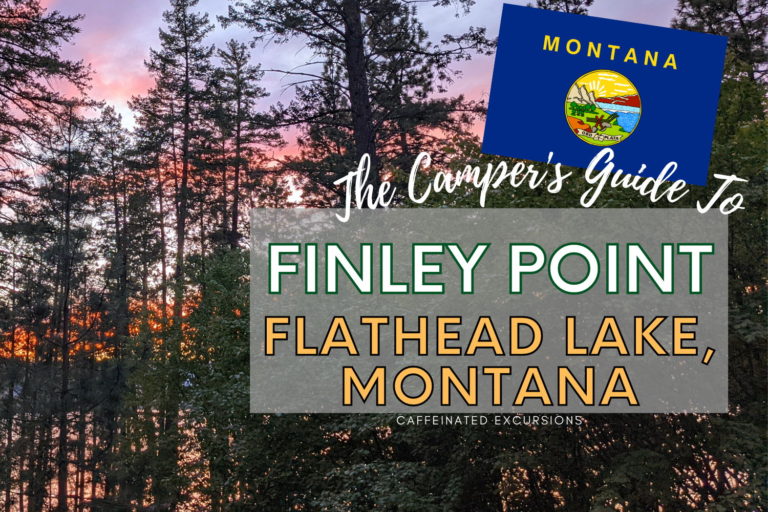

I’m so glad I got to explore Rodger’s Park and Loyola a bit before I moved out of Chicago. It really is a beautiful neighborhood and I wish I tried more of the restaurants up there. This post makes me want to go back and explore more!
I’ll be moving to Edgewater, but even though I thought Rogers Park was too far, I am going to miss the #lakelife.